
Tesselescence @Compound Yellow



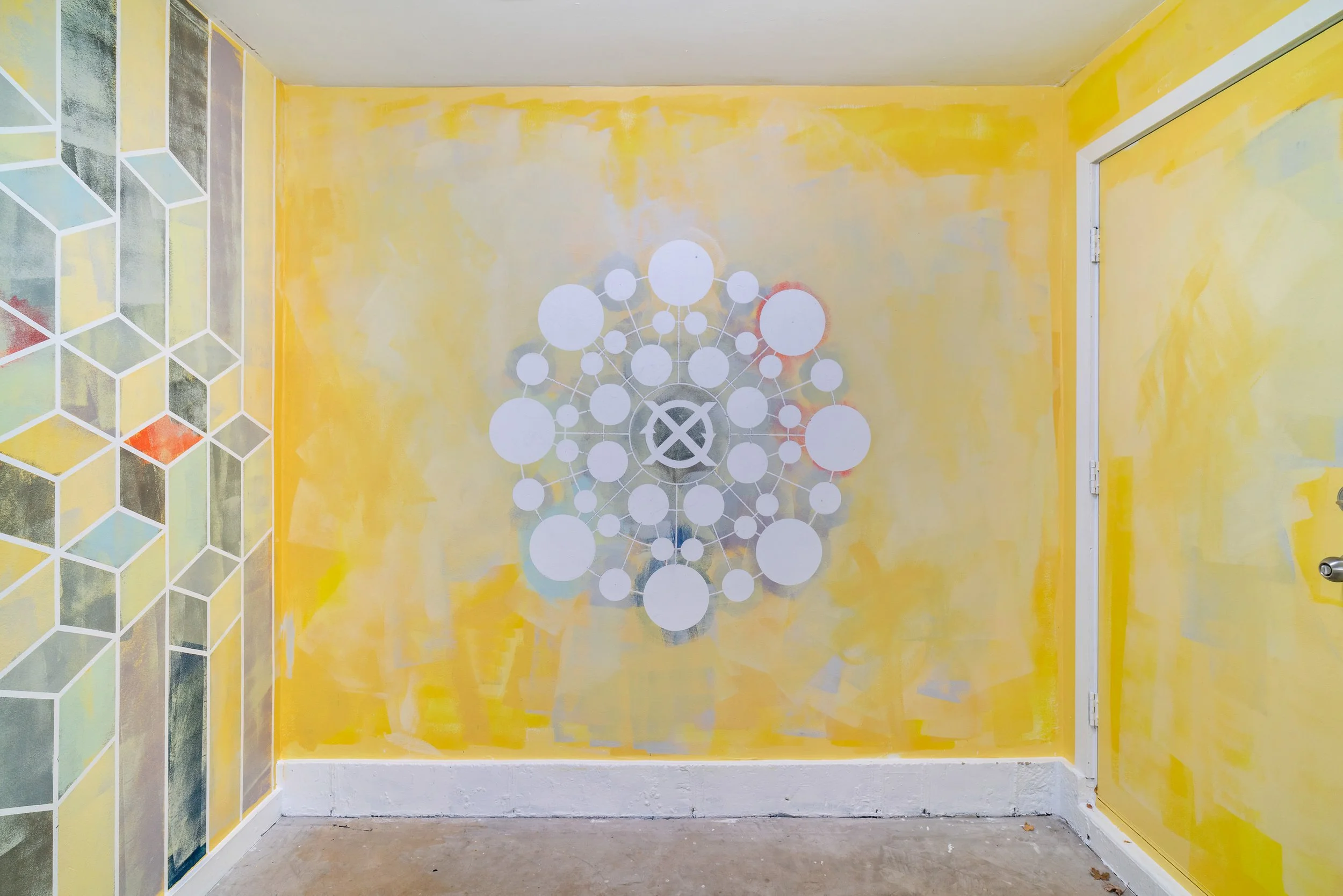
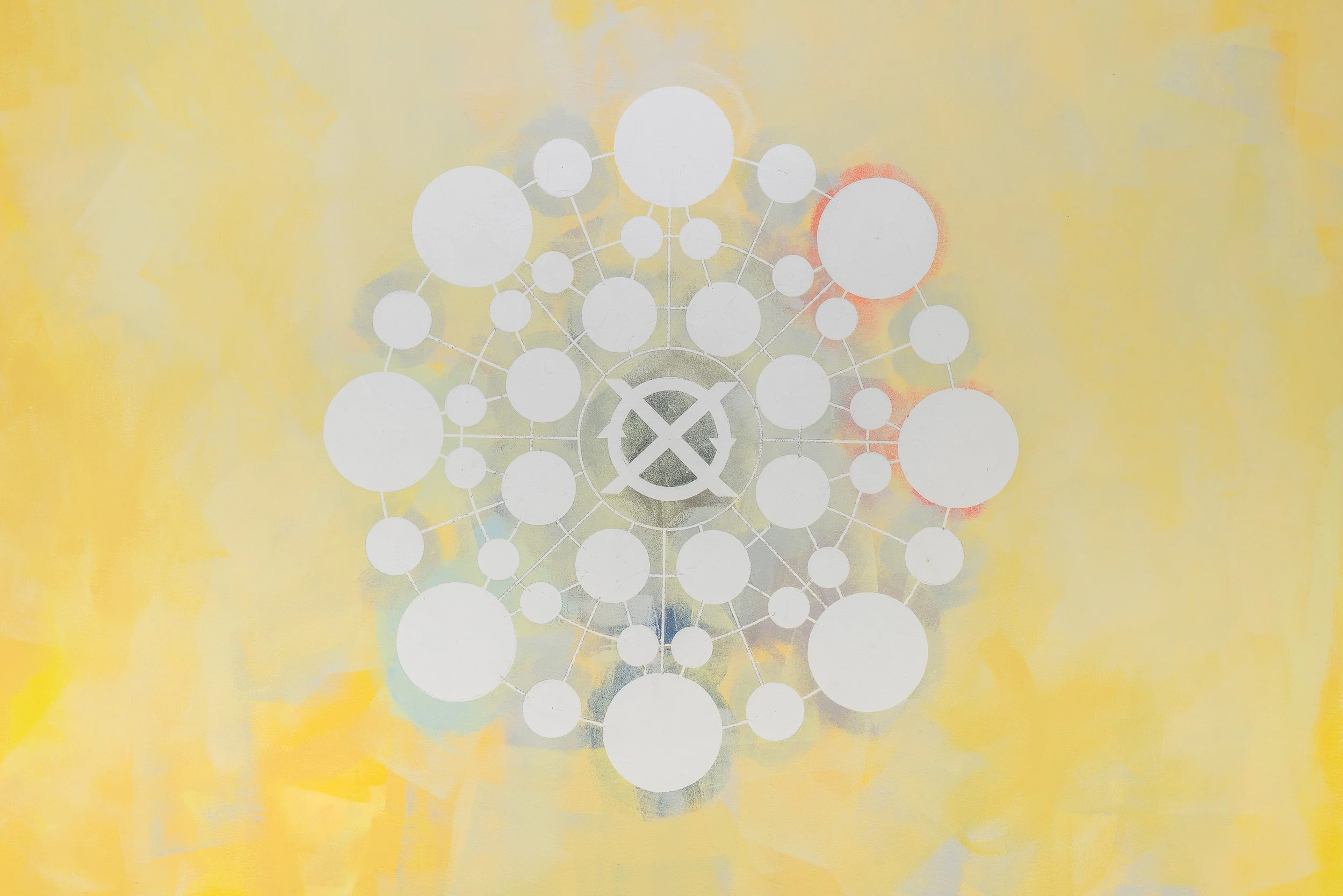
Also included in the exhibition is an abstracted projection of Haftner’s Elements of Waste - a visual artist statement used to both curate and contain the waste materials with which she chooses to engage. This is an early and experimental engagement with this evolving rubric.

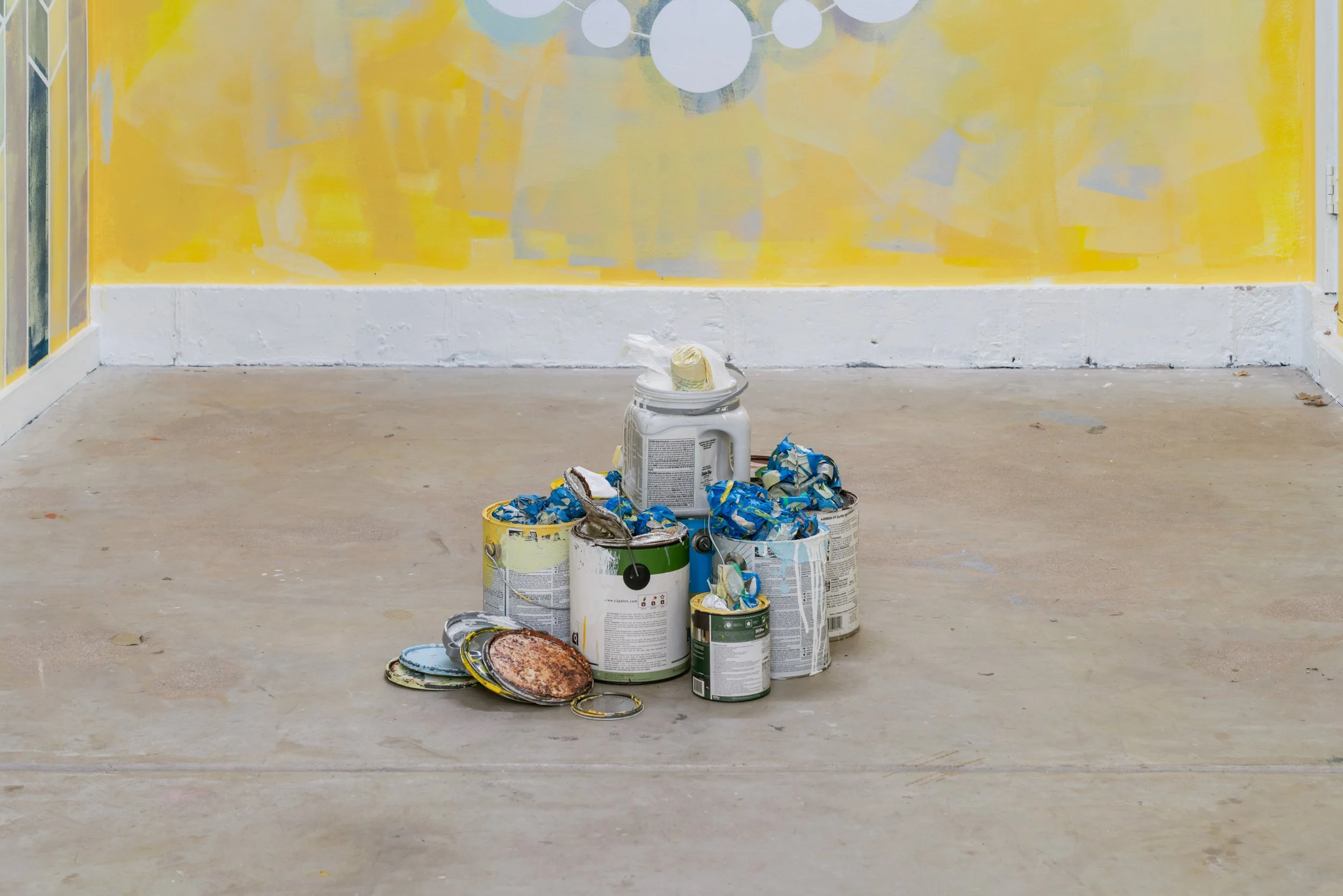




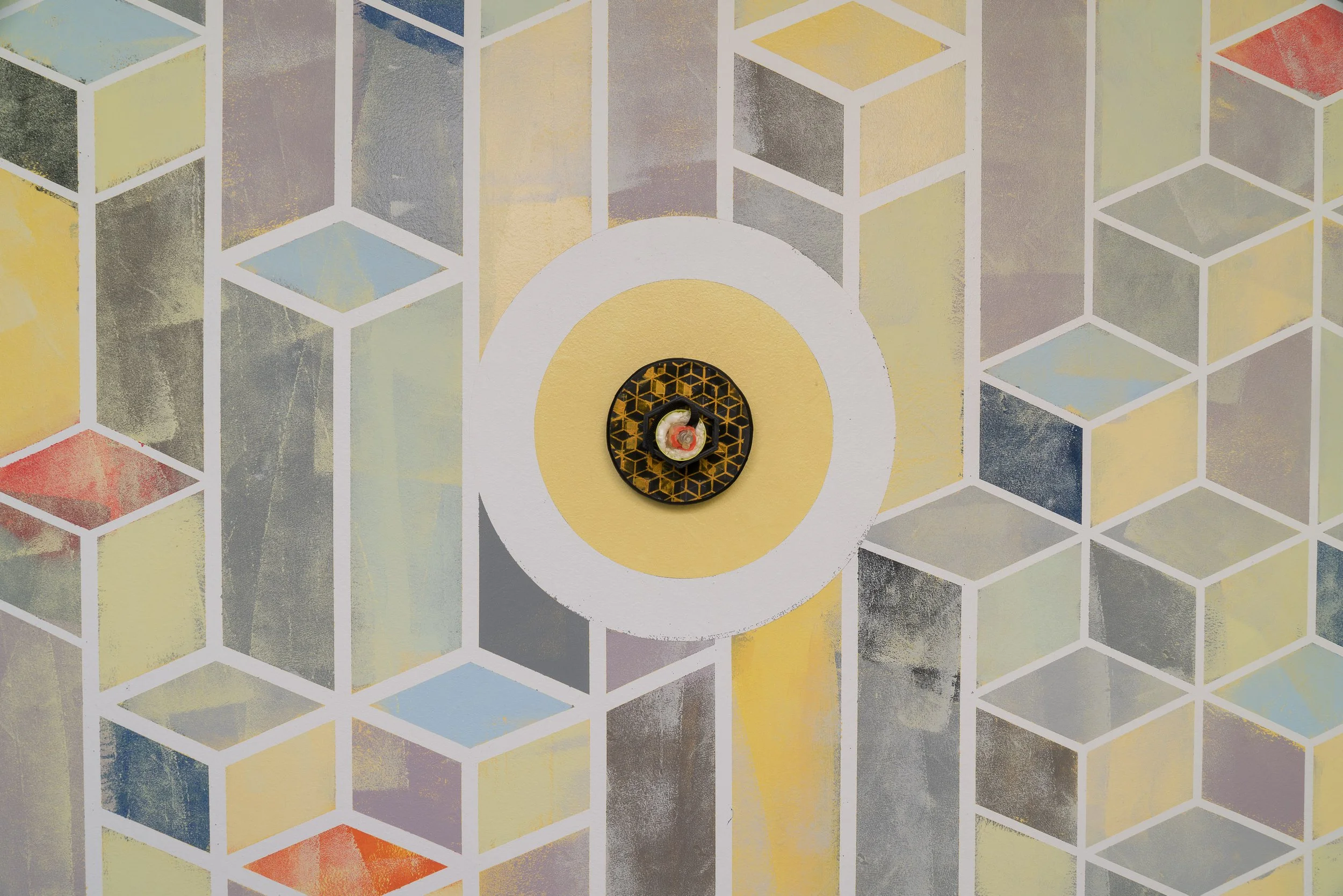

Material Biases
The series of artworks framed within the context of Tesselescence (Compound Yellow) are the most recent in Haftner’s ongoing Material Biases series (2018-present). Each Material Bias acts as a condensed installation predicated on the idea that the word 'material' itself is a bias, implying that matter is 'for human use.' They consist of three parts: 1) a Site (a wall painting), 2) an Object (the support), and 3) a Subject (the central focus of the artwork). To create these works, Haftner intuitively and playfully follows her own material biases, using experimental waste from her larger practice, or bits of garbage she’s prone to collecting. After the works are completed, an intensive research process to discover the chemical contents of each piece begins (for example, ethylcyanoacrylate is the chemical name for super glue, while holocellulose/lignin are the primary chemical contents of tree bark). These works invert the typical methodology of Haftner’s practice, which more often begins deep material research, followed by a lengthy chemical transformation of a given waste material into artwork. For the Material Biases in Tesselescence (Compound Yellow), four local artists were invited to provide a Subject for a new Material Bias Object, which was made with them in mind. Participating artists include Alberto Aguilar, Arnold J. Kemp, Laura Shaeffer, and Lisa Walcott. For the fifth Material Bias, Haftner chose plastic glitter as her Subject, which was recently banned in Europe for being a pollutant disposable microplastic.

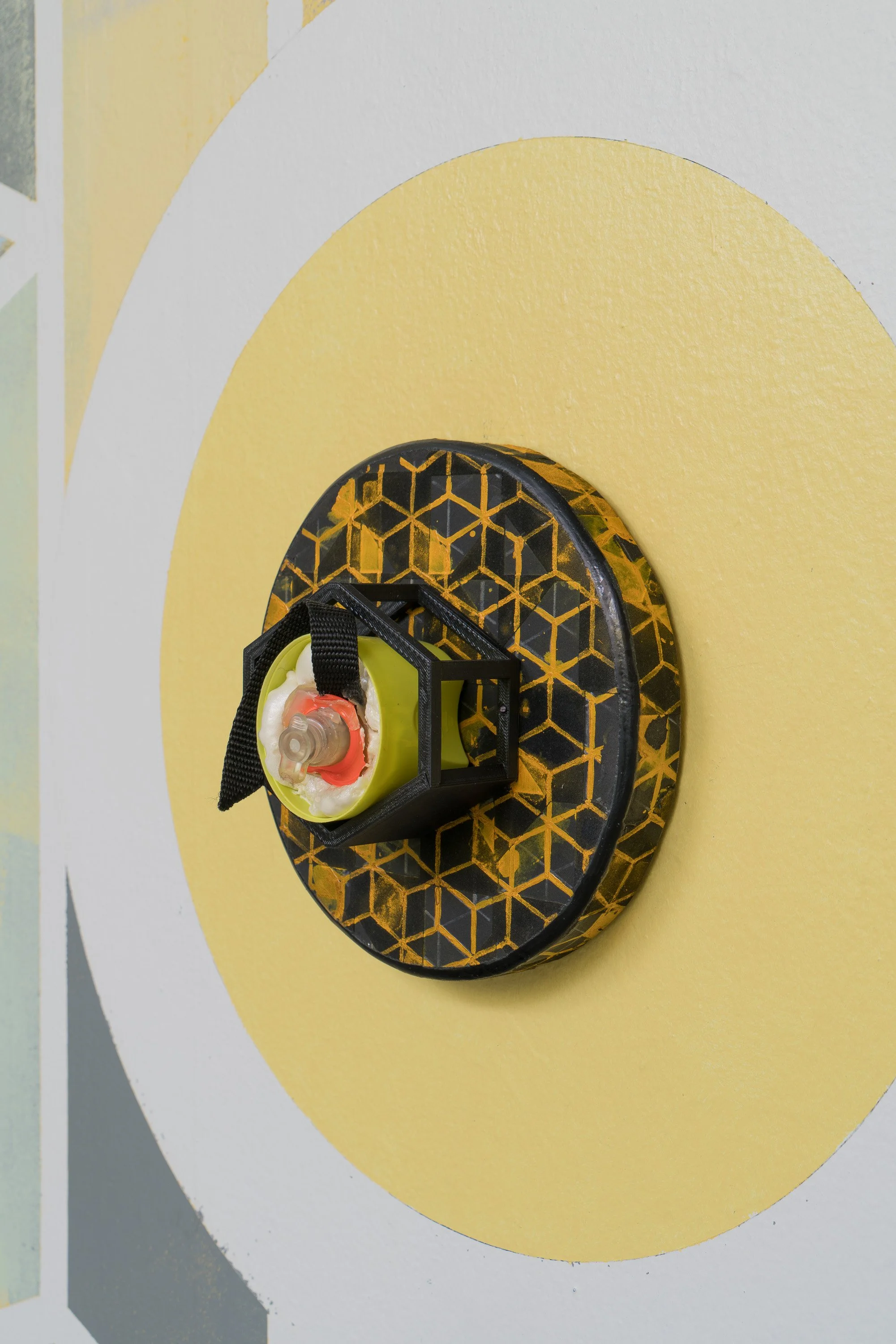
Material Bias in Thumbnails (Lisa Walcott)
Isocyanic acid, polymethylenepolyphenylene ester, 2-propanol 1-chloro- phosphate (3:1), propane, 2-methyl- propane, dimethyl ether, +[proprietary] (insulation foam), polyvinyl chloride, phthalates (mouth valve), polypropylene (spray paint cap), esters, hydrocarbons, free fatty acids (beeswax), adipic acid, hexamethylenediamine, polyamides [dicarboxylic acid, diamine, amino acids, or and/or lactam] (nylon webbing strap), neodymium, iron, boron (rare earth magnet), ethylene-vinyl acetate, terpene, phenol (hot glue), polylactic acid (plastic shelf), ethylcyanoacrylate (instant CA adhesive), tungsten, chromium, vanadium, molybdenum (finishing nails), cellulose, hemicellulose, lignin, urea-formaldehyde (plywood), cellulose, phenoformaldehyde (medium density fiberboard), polyvinyl acetate (wood glue), cellulose, polyester, carbon, urethane, methylpyrrolidone, triethylamine (velour paper), polystyrene, cellulose, kaolin (foamcore), barium sulfate, cadmium sulfide, cadmium selenide, barium sulfate, cadmium sulfide, zinc sulfide, copper chloride doped, ammonium hydroxide, propylene glycol (yellow-orange fluid airbrush acrylic), acetone, hexane, propane, butane, heptane, aliphatic hydrocarbon, cyclohexane, toluene, cyclopentane (spray adhesive), titanium dioxide, kaolin, silicate minerals, caclive, dolomite, cellulose ether, alkanes, aliphatic ester, monohydric alcohol, hydroxy aliphatic ester, p-methoxycinnamie aliphatic diester, p-hydroxycinnamic aliphatic diester (white coloured pencil), graphite, sodium bentonite (pencil), acrylate, methacrylate, acrylic acid (acid-free photo tape), ethylene glycol, titanium dioxide, 1,2-benzisothiazol-3(2H)-one, 5-chloro-2-methyl-2H-isothiazol-2-one and 2-methyl-2H-isothiazol-3-one (paintable acrylic sealant), carbon, dihydrogen monoxide (India ink), iron, carbon, manganese, silicon, copper, chromium (screws/keyhole hanger), xylene, toluene, urethane resin (permanent marker)_43 x 43 x 11cm_2023





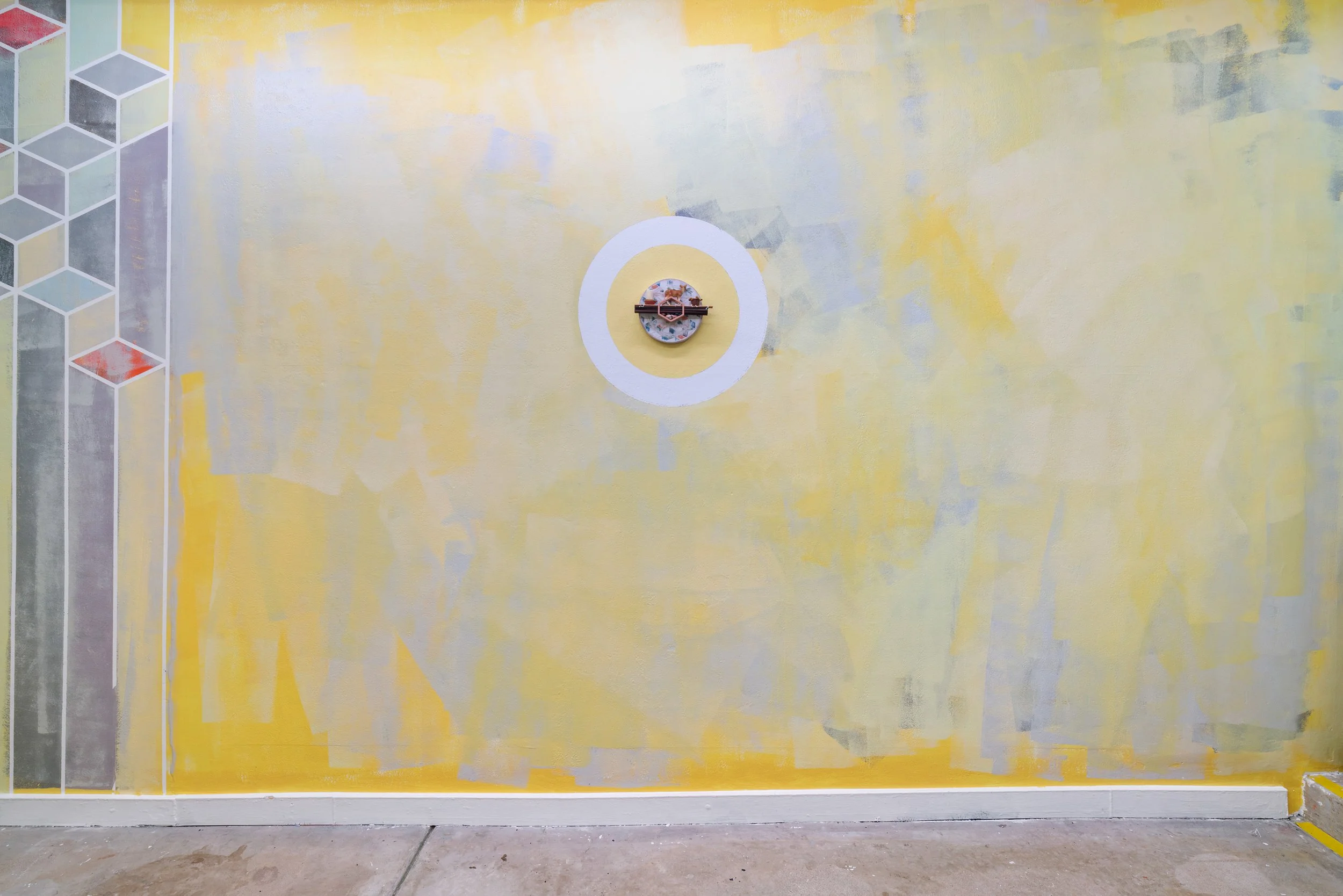

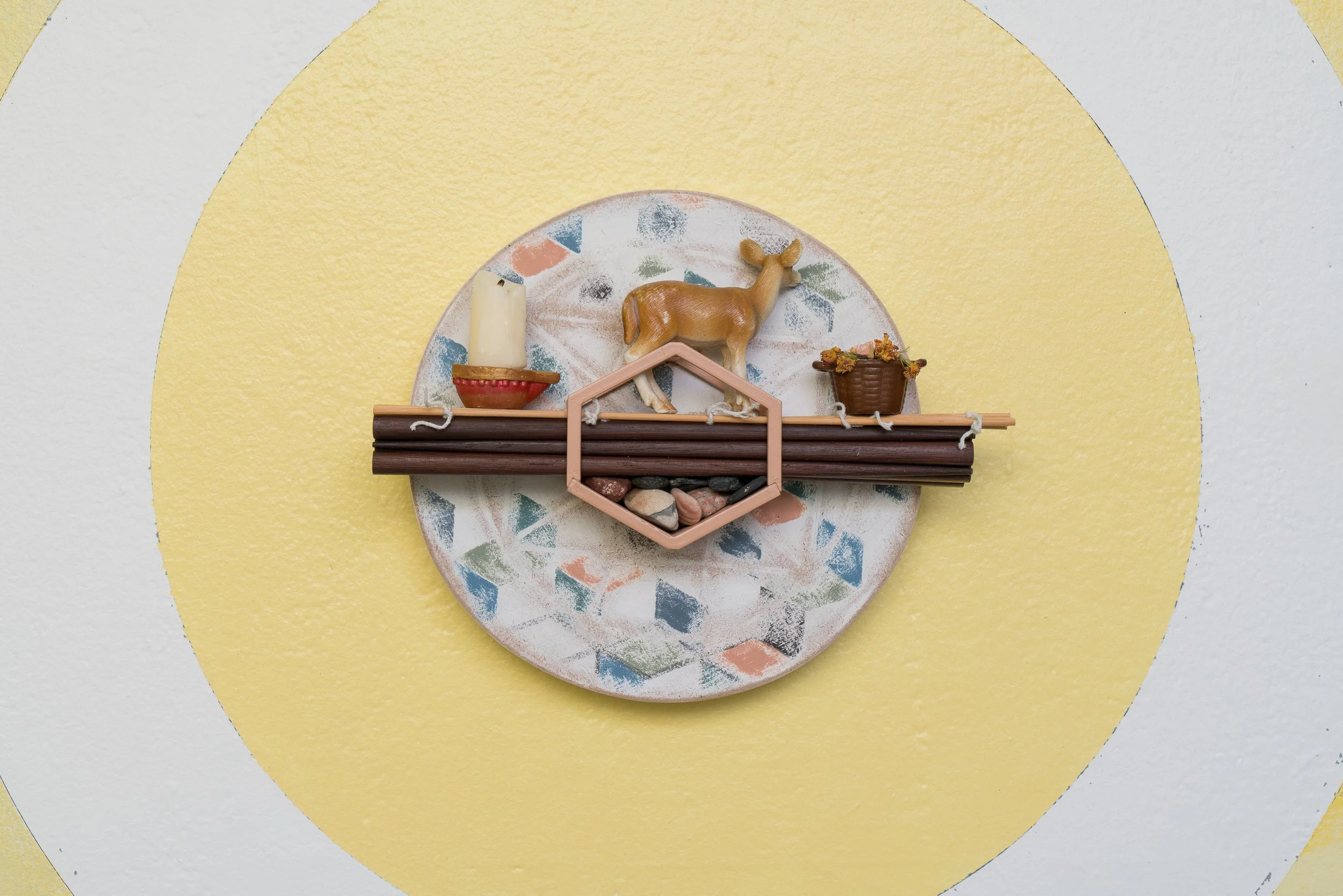

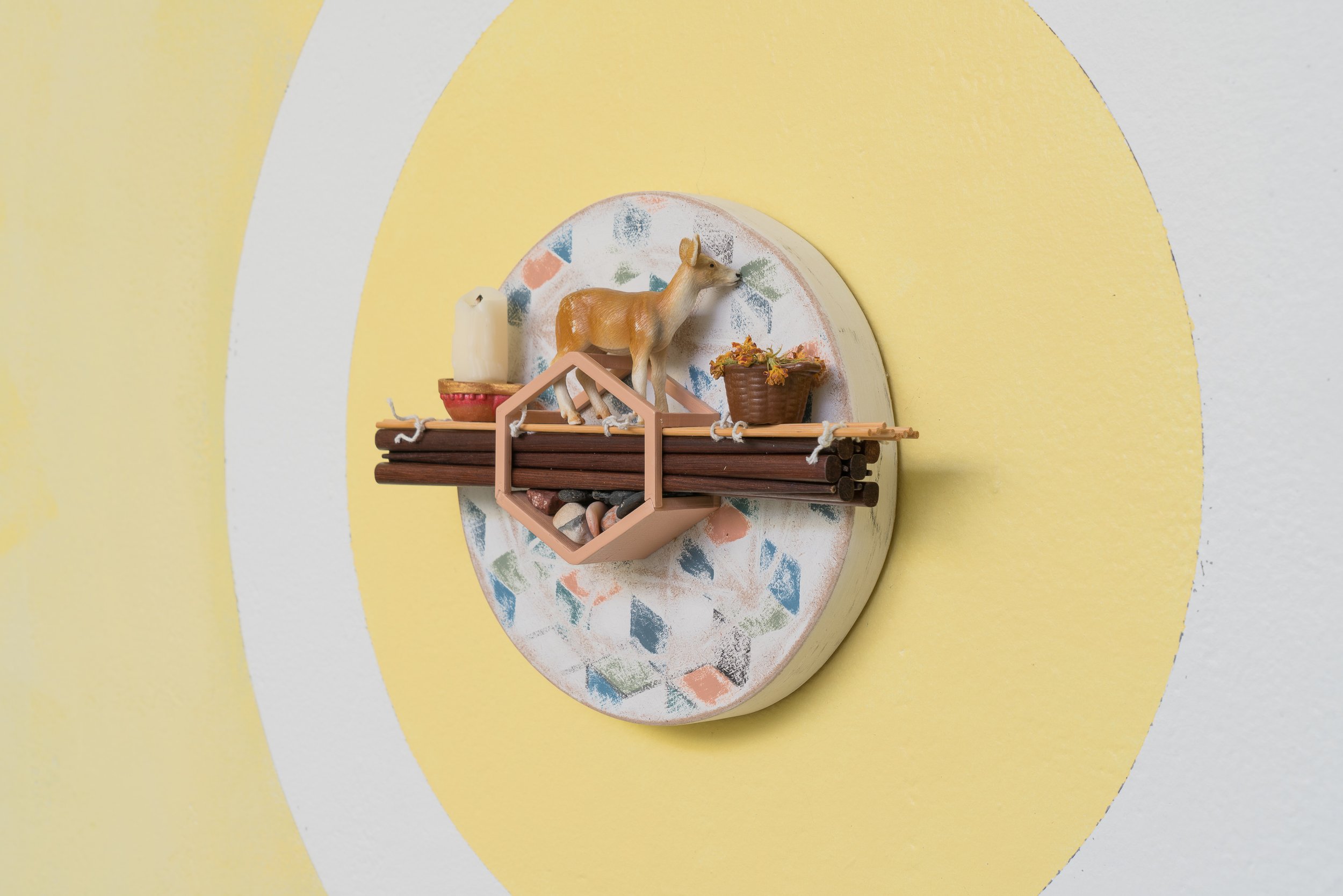
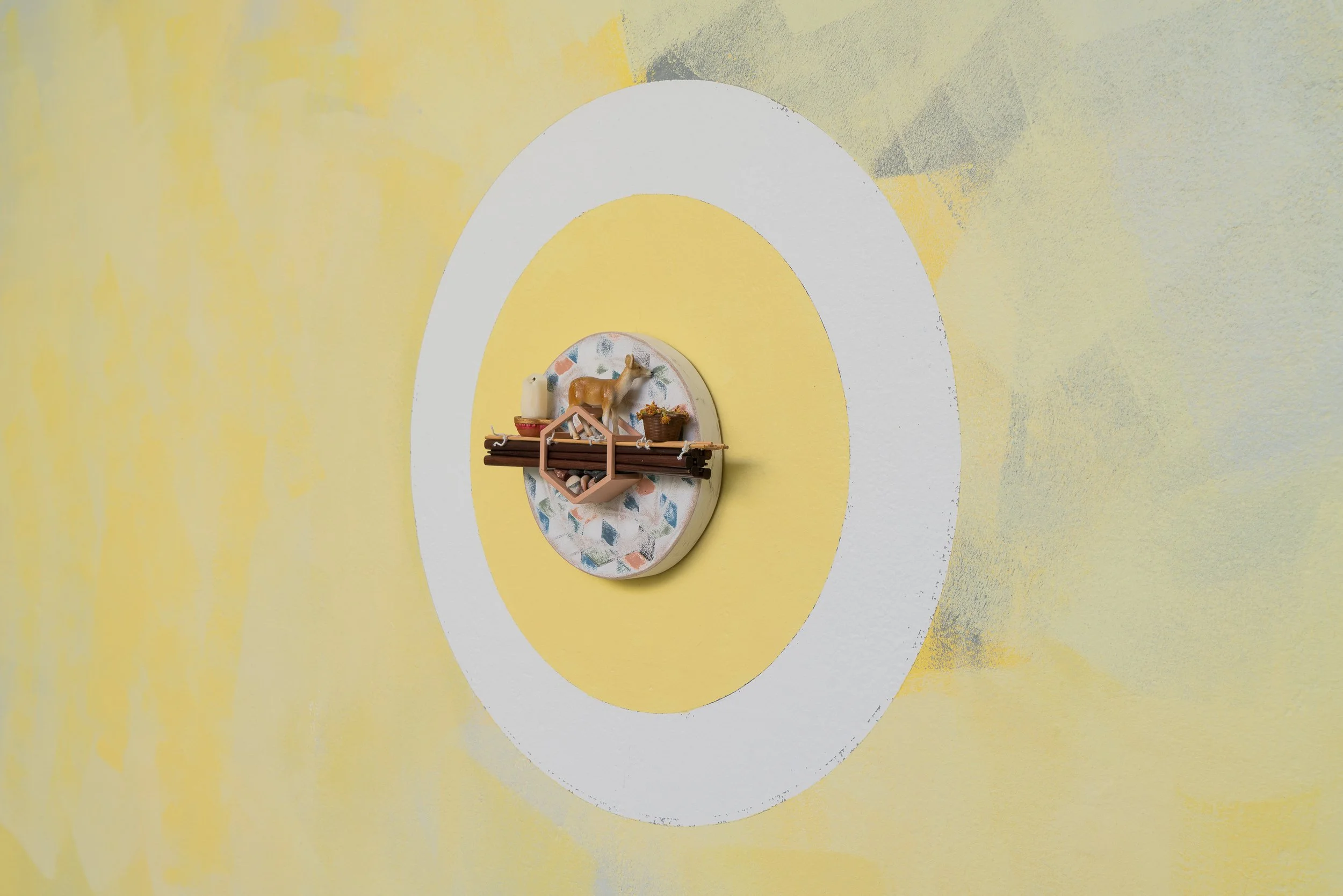

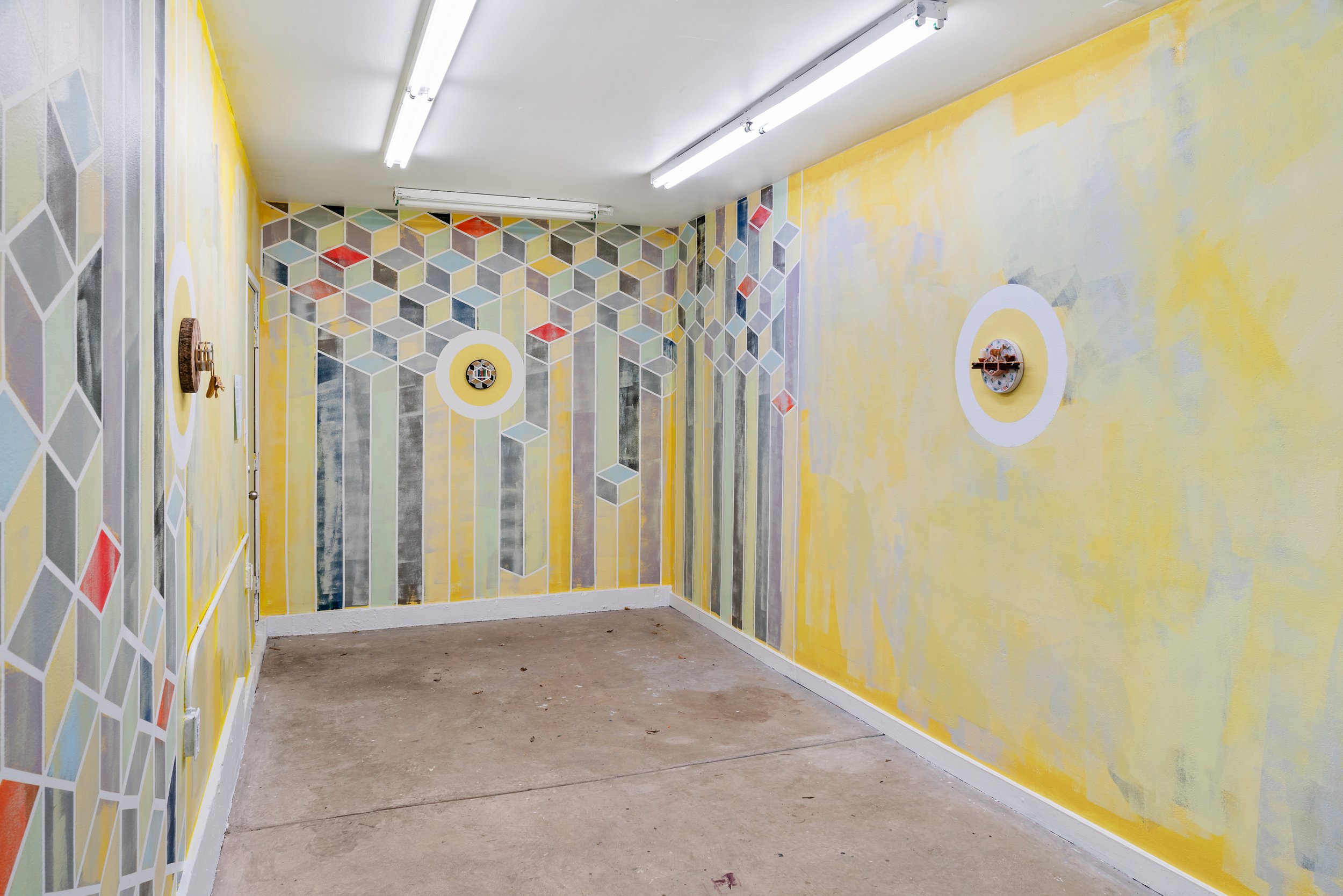

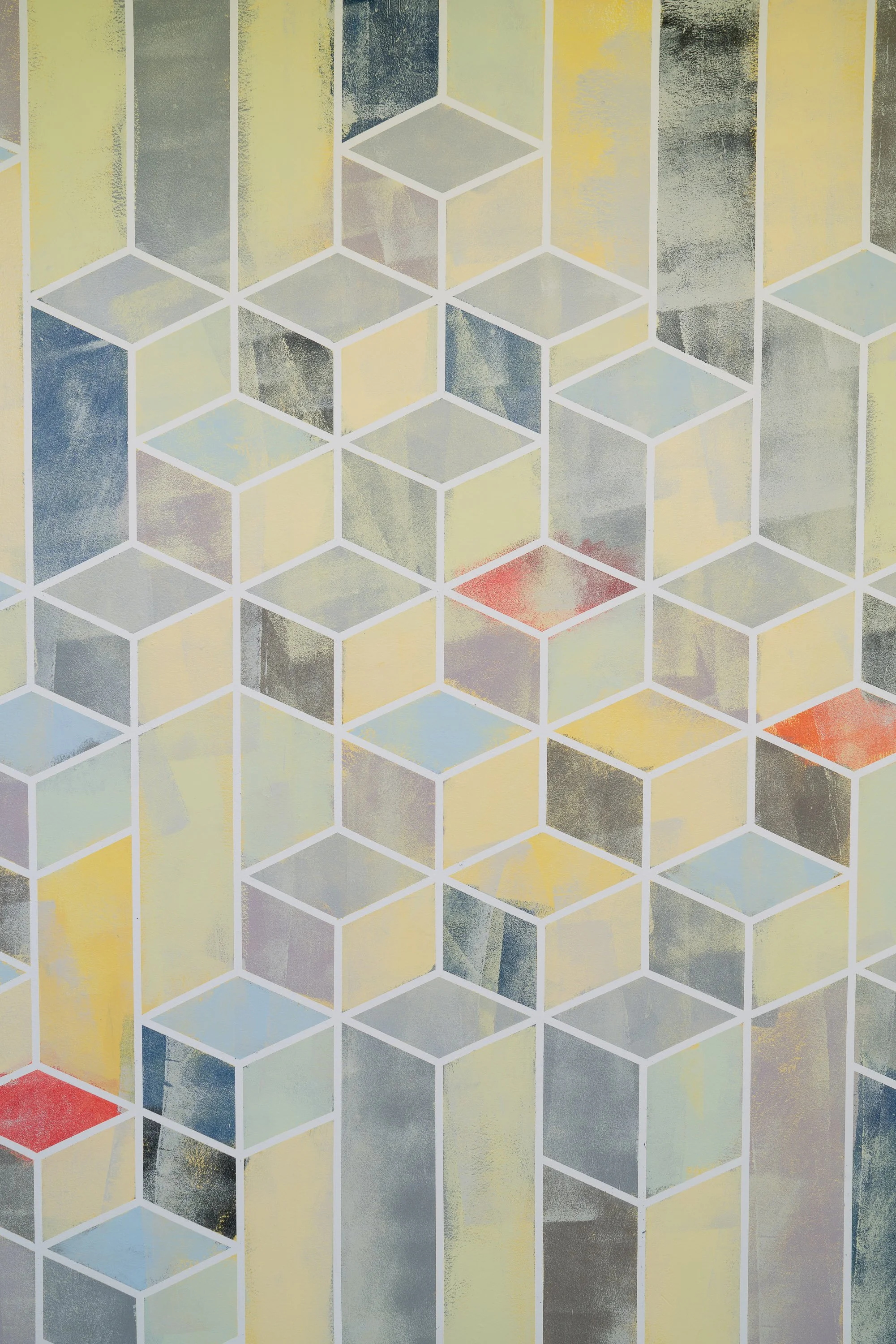

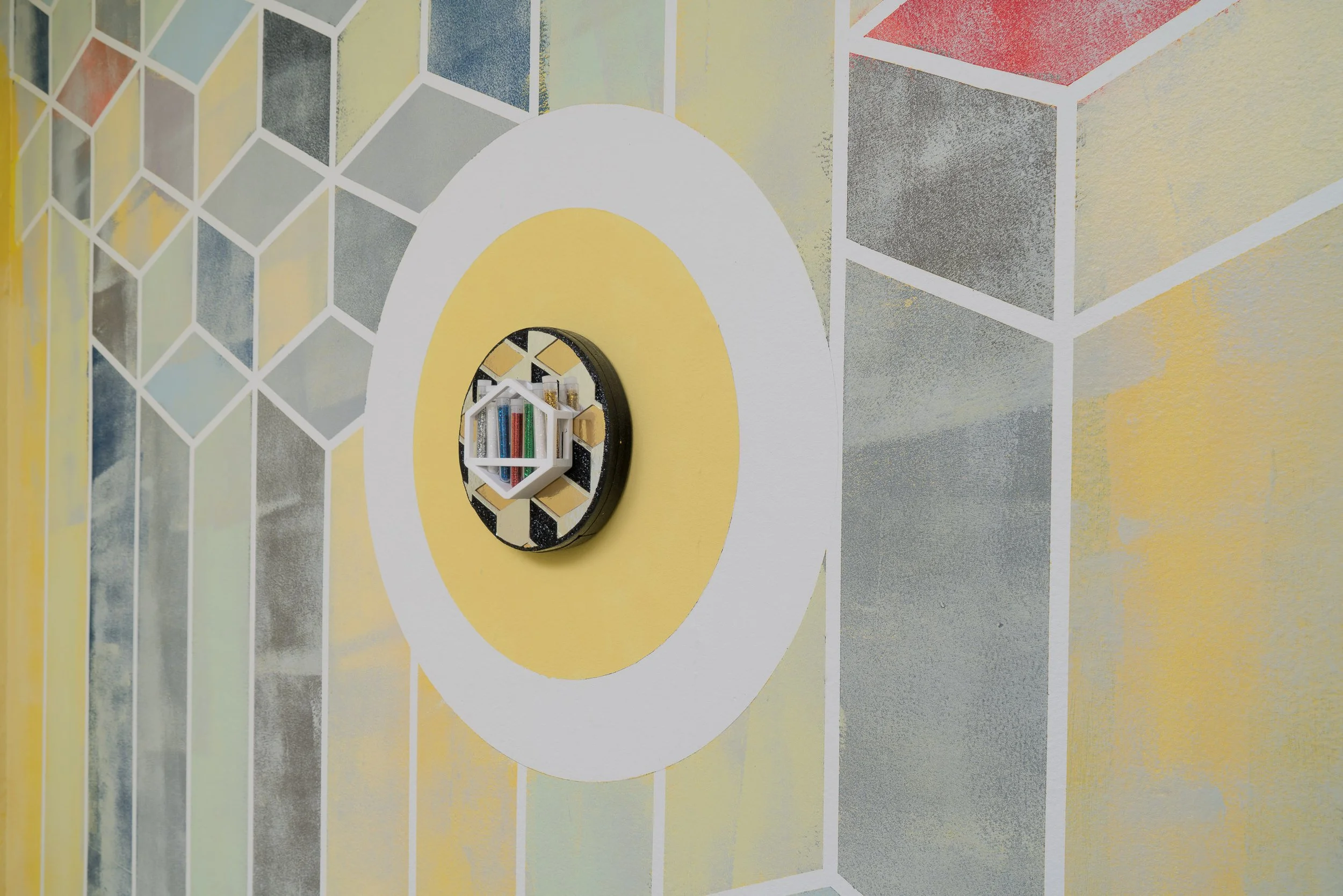
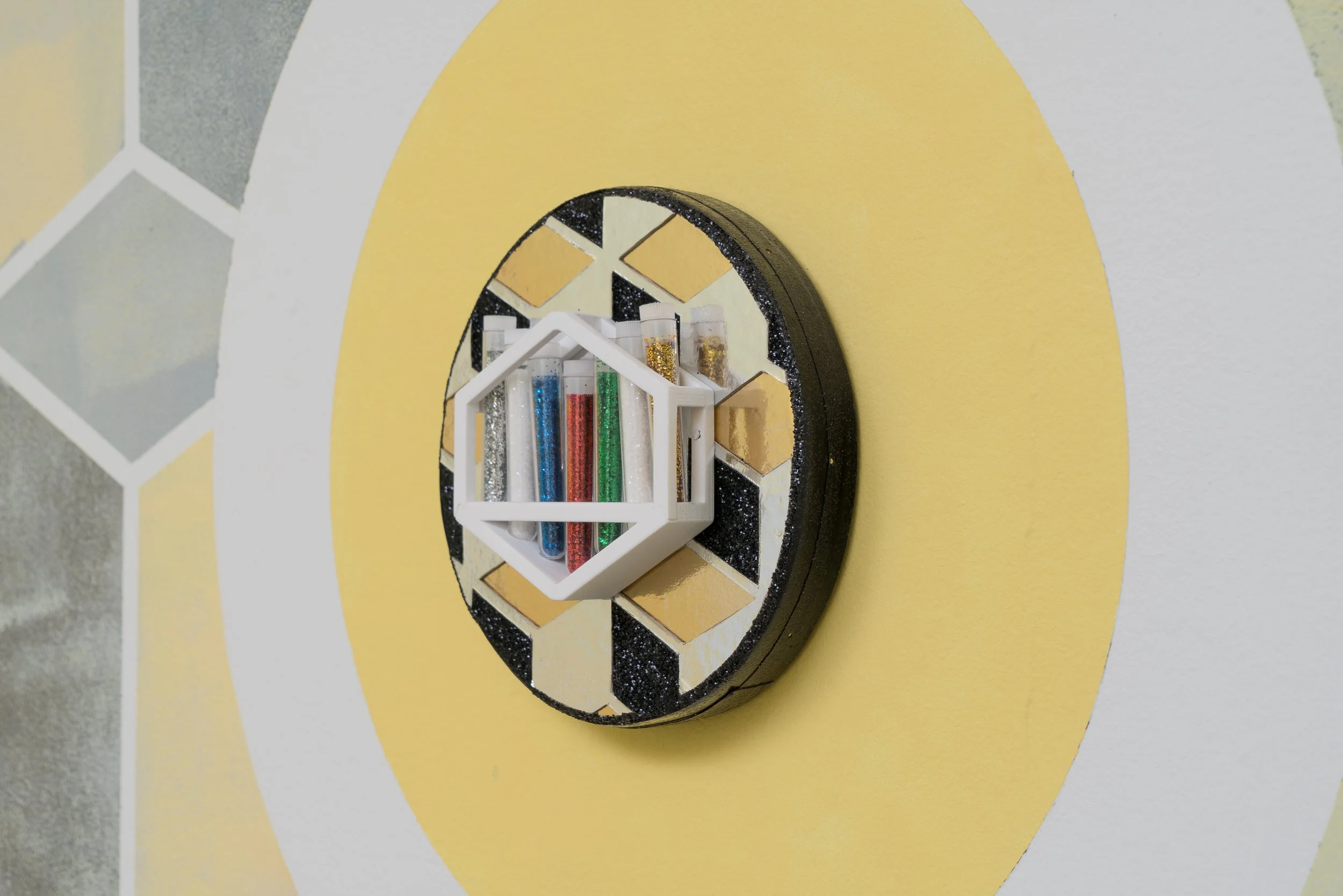
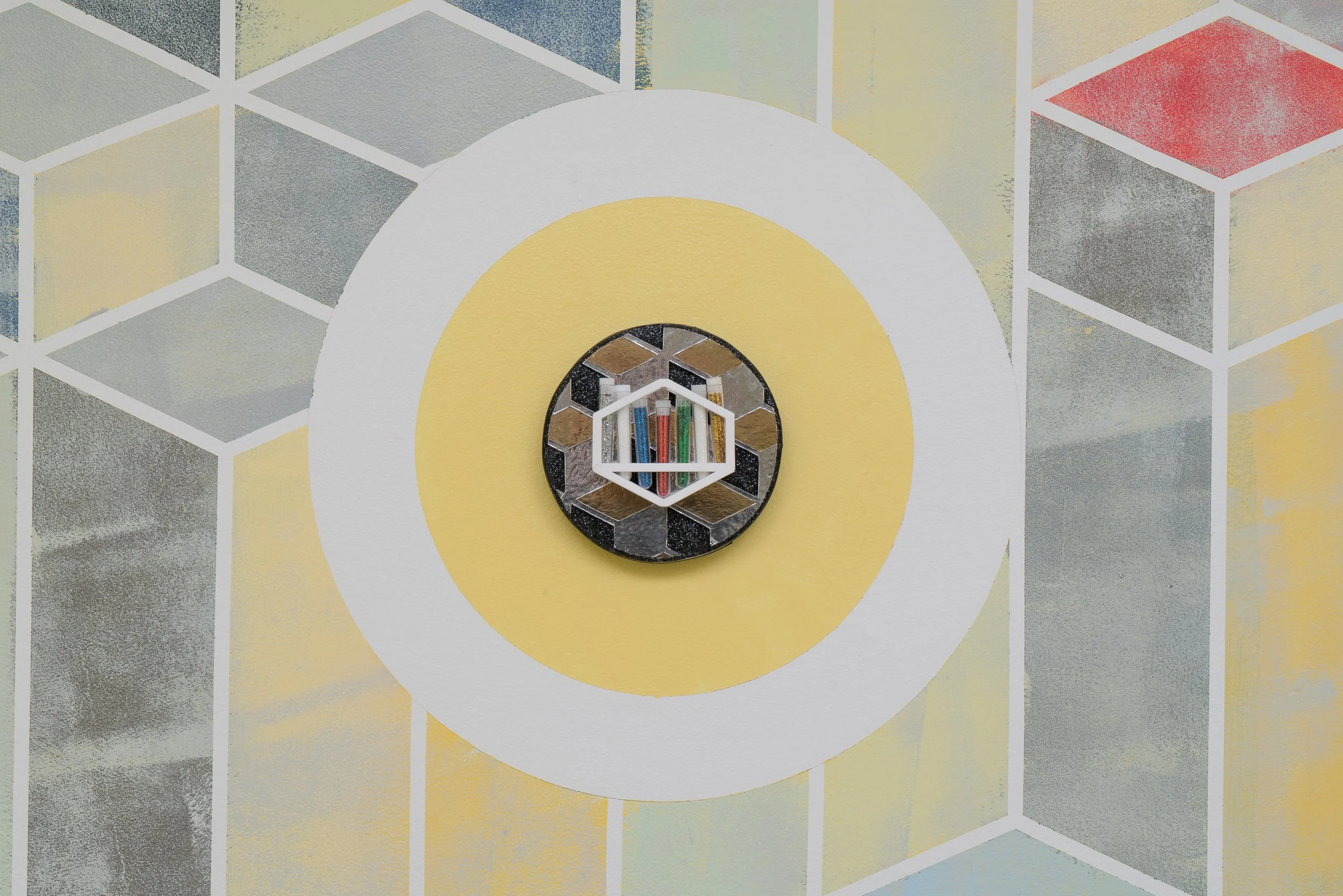

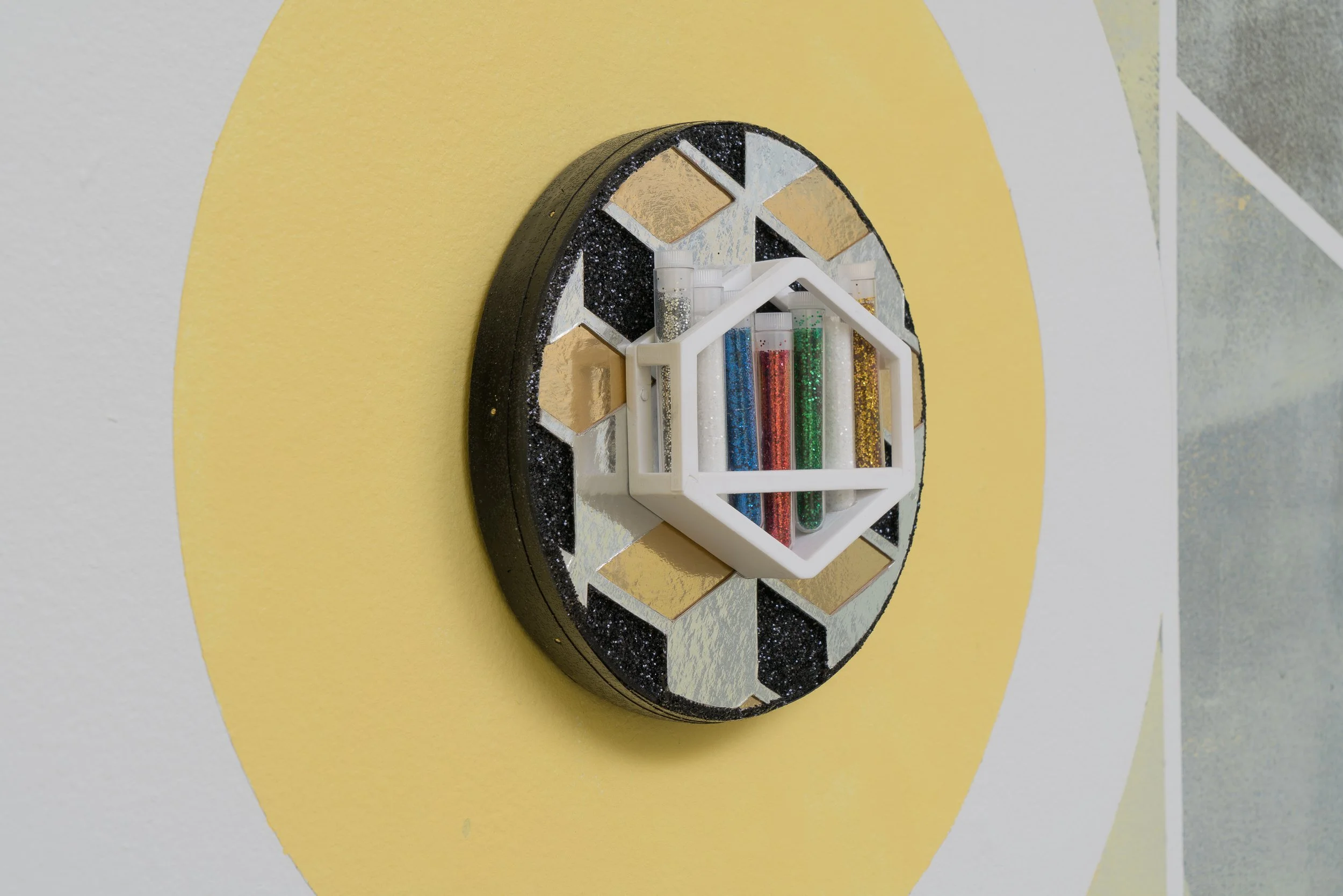
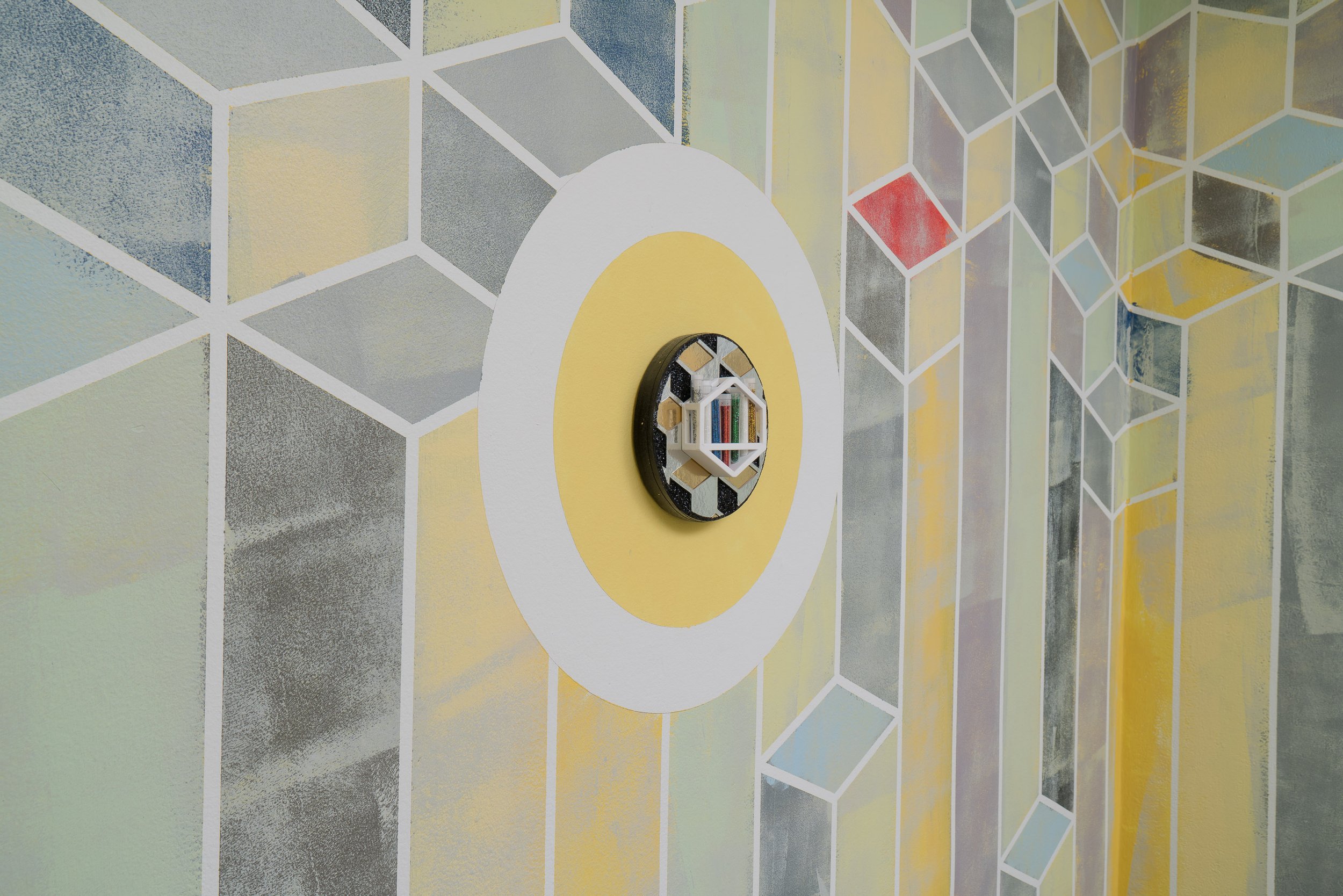
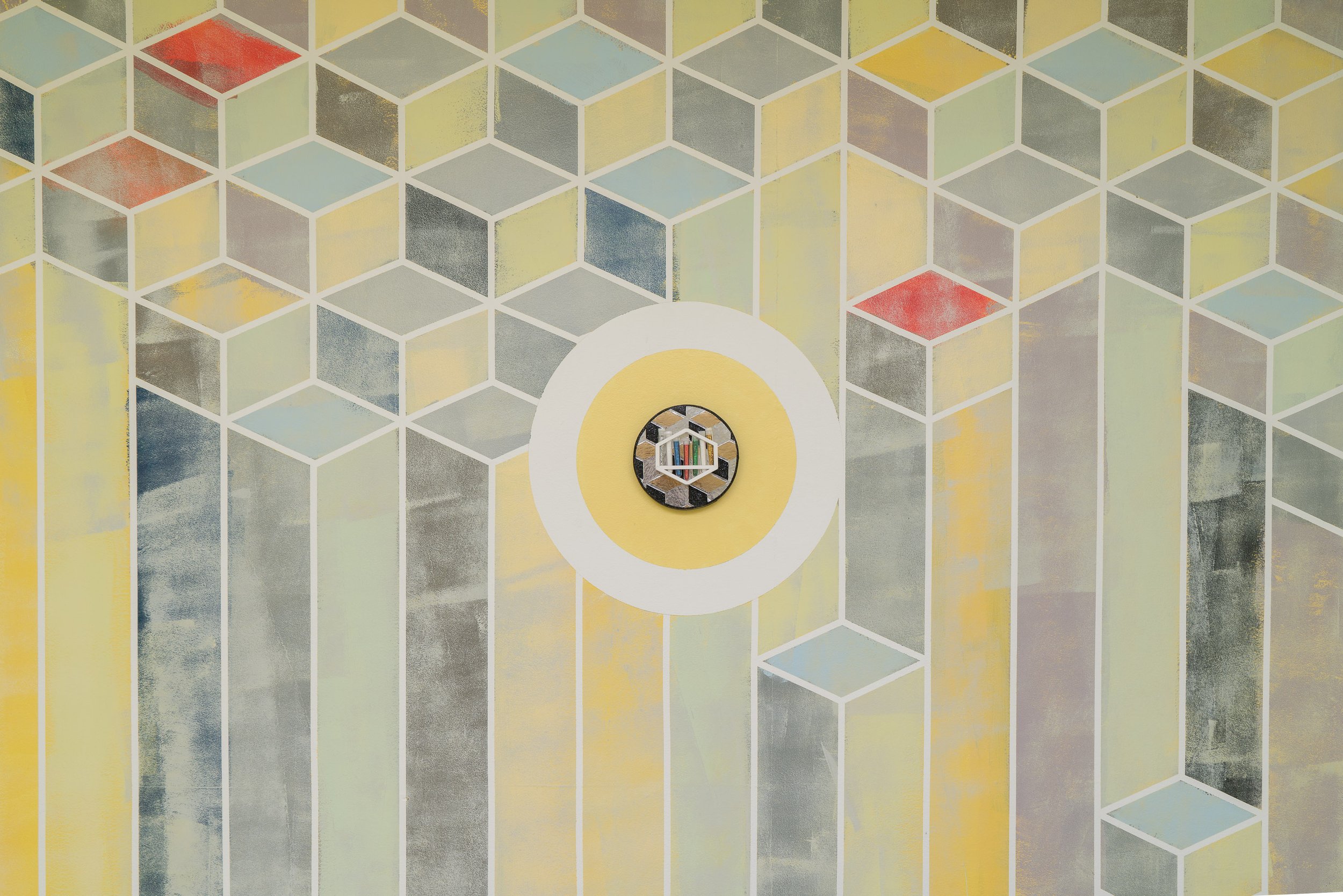
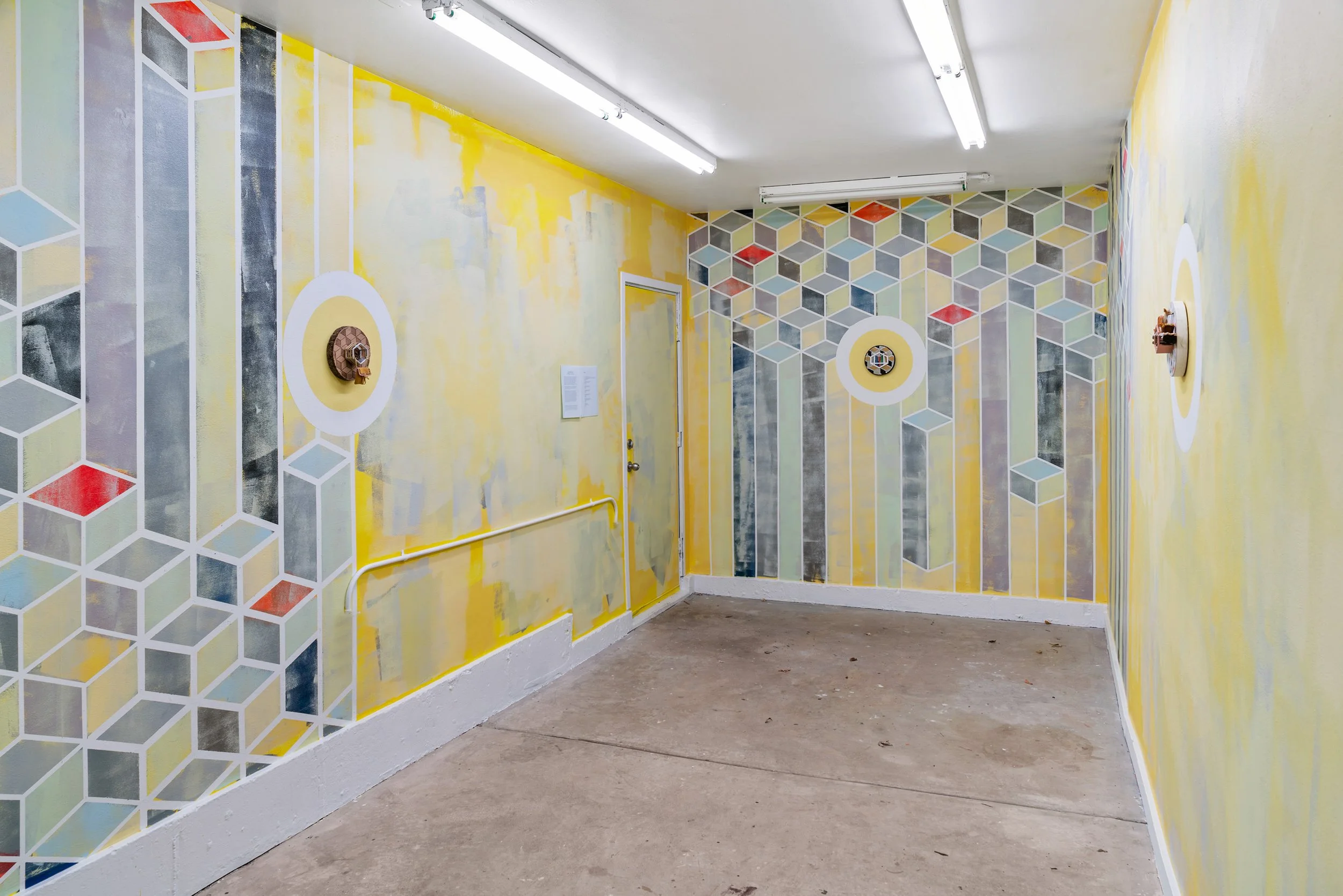


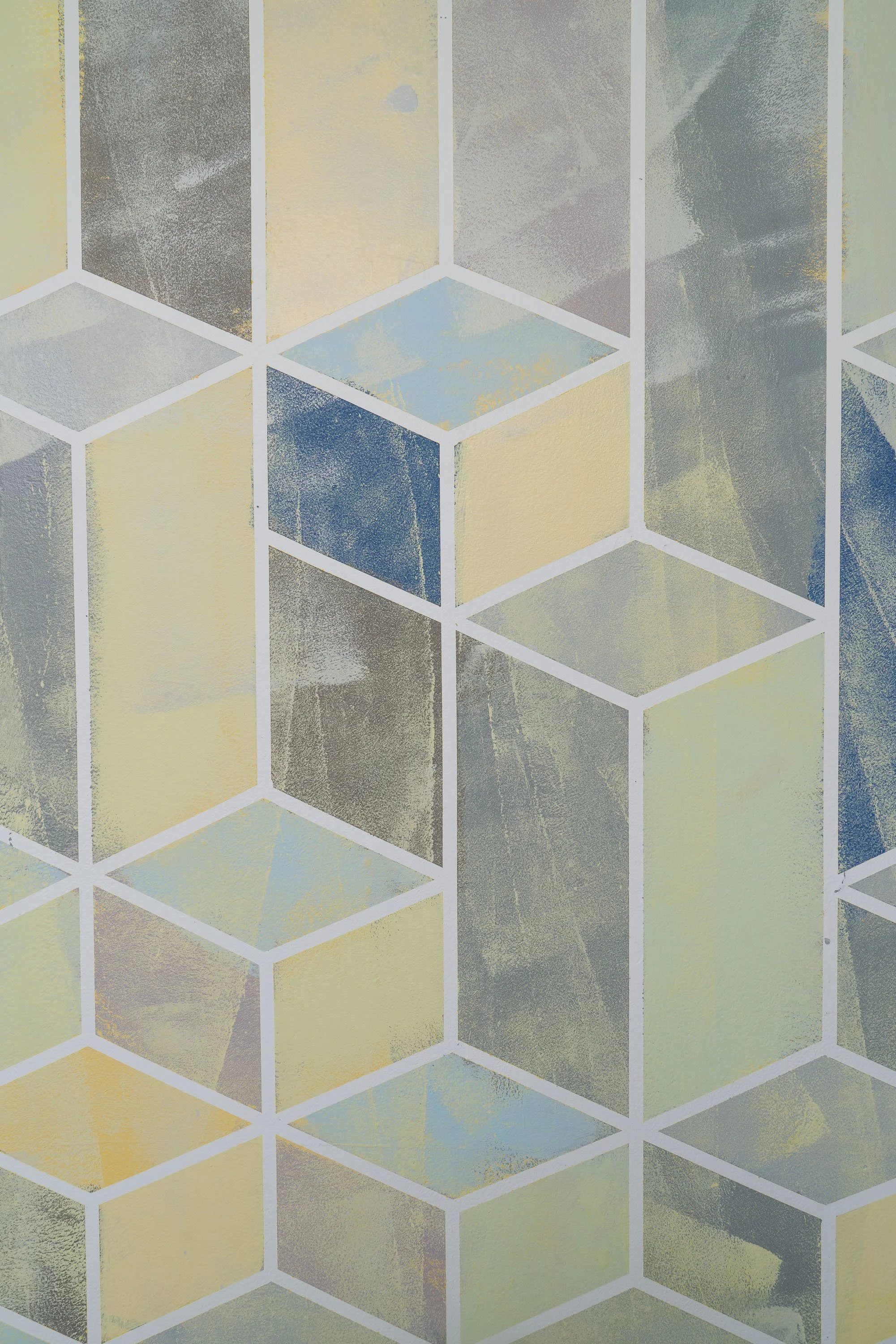

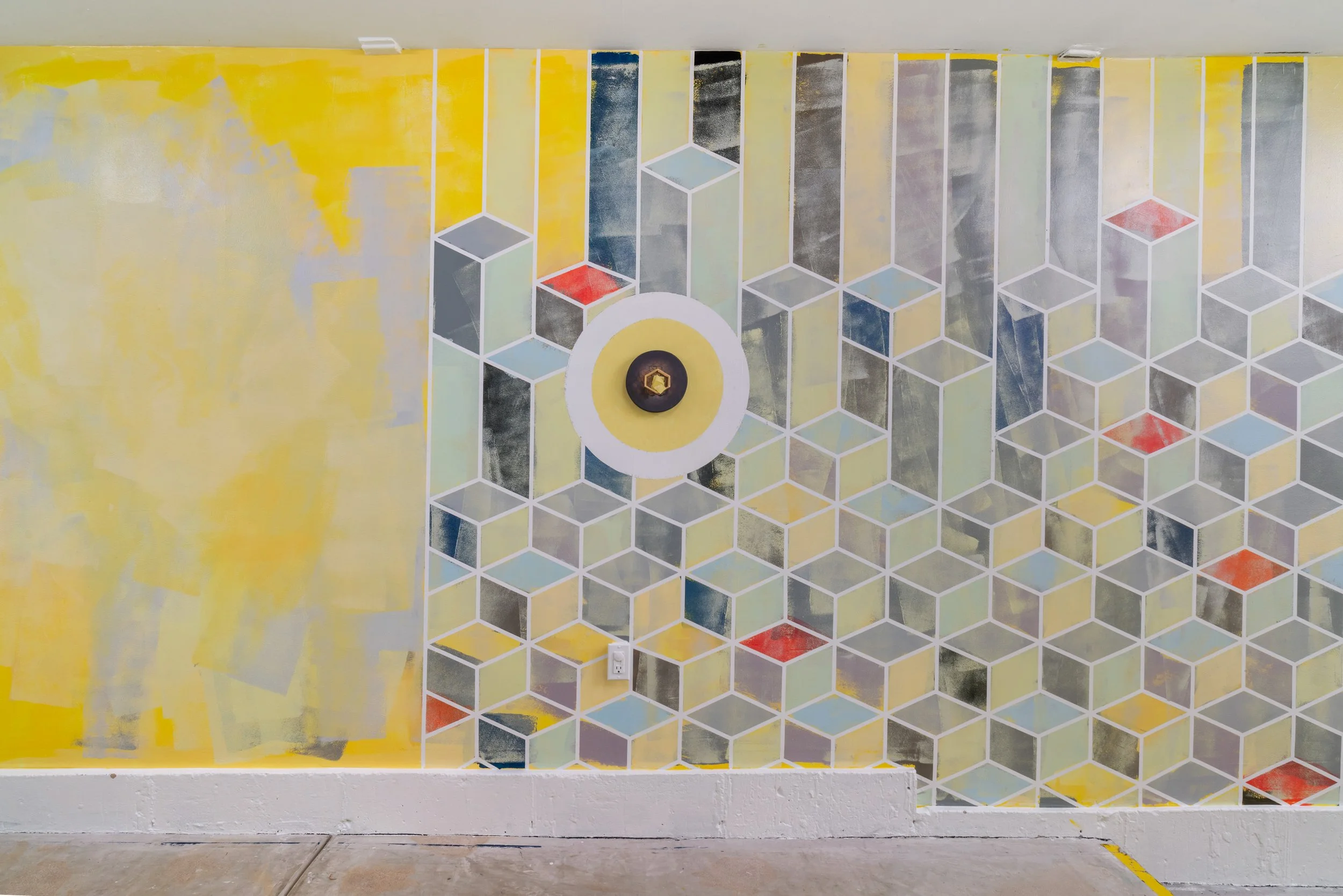
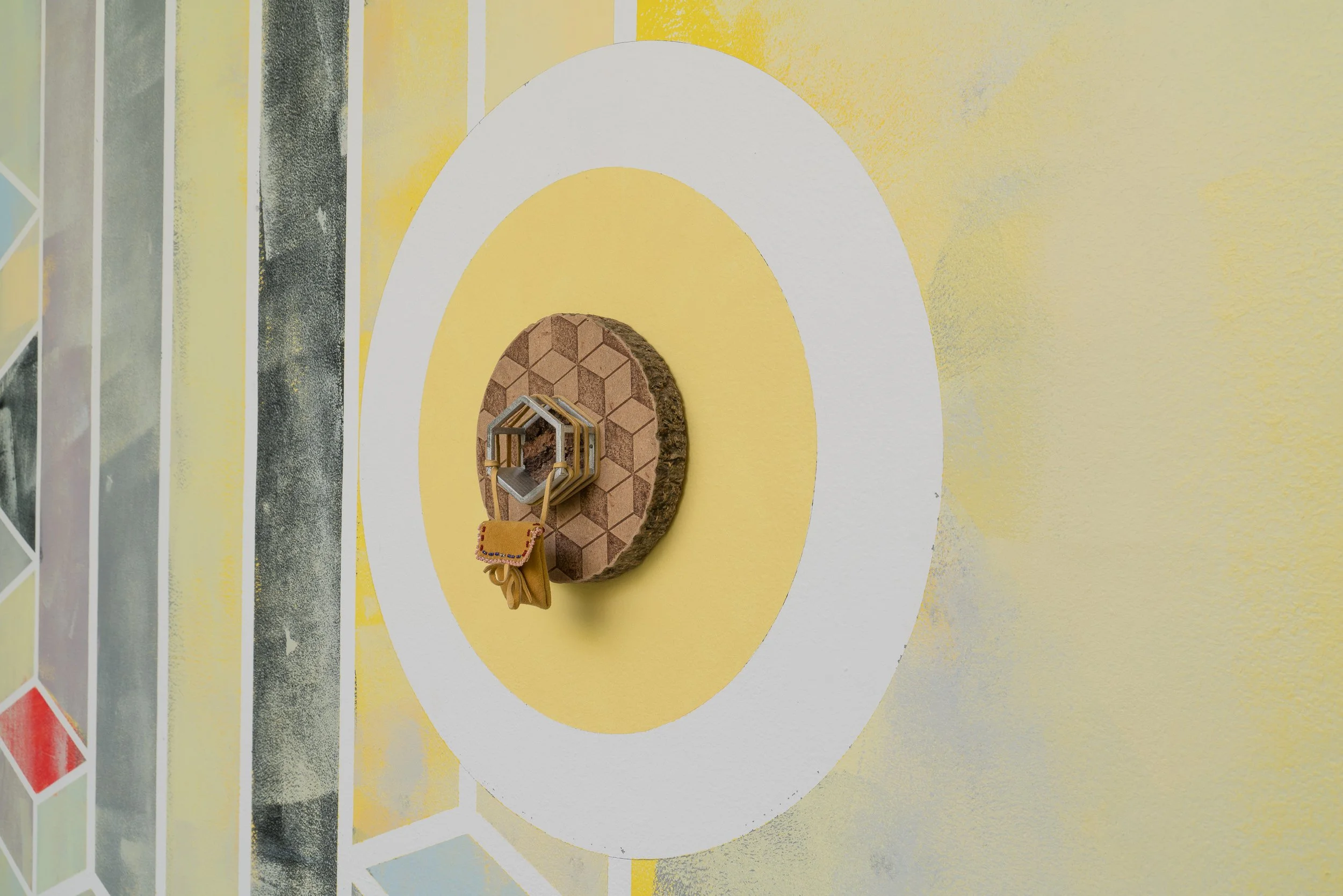
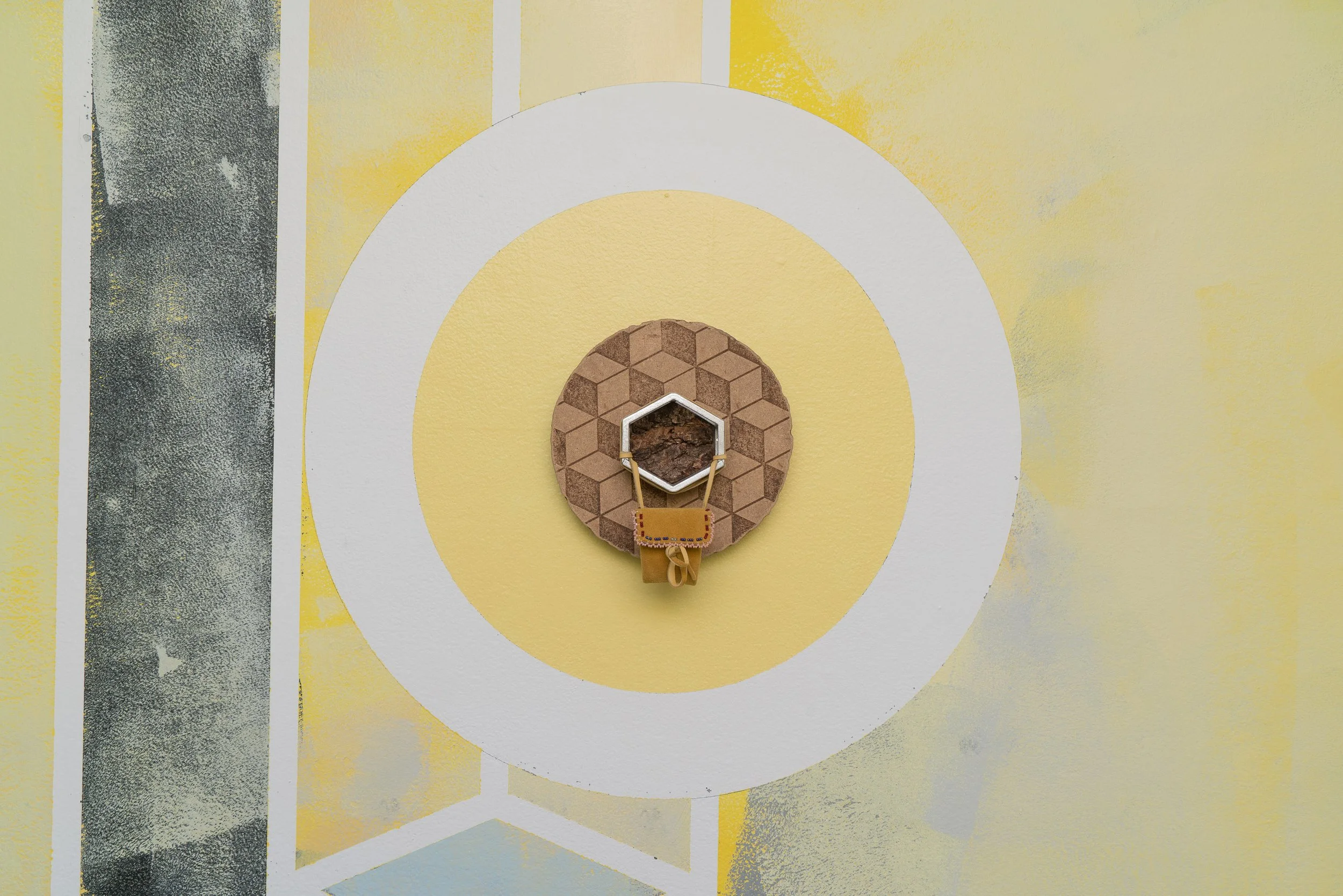
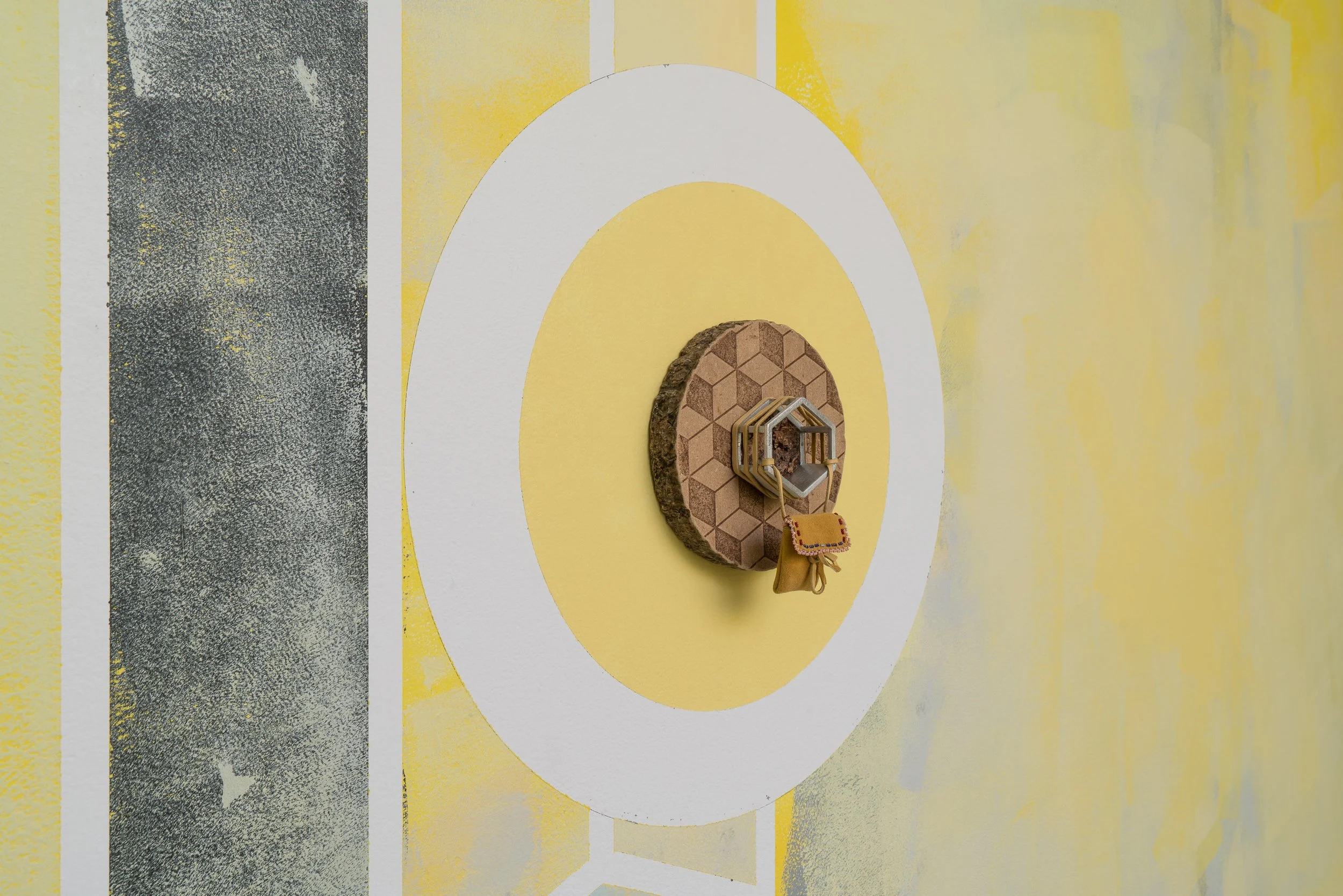
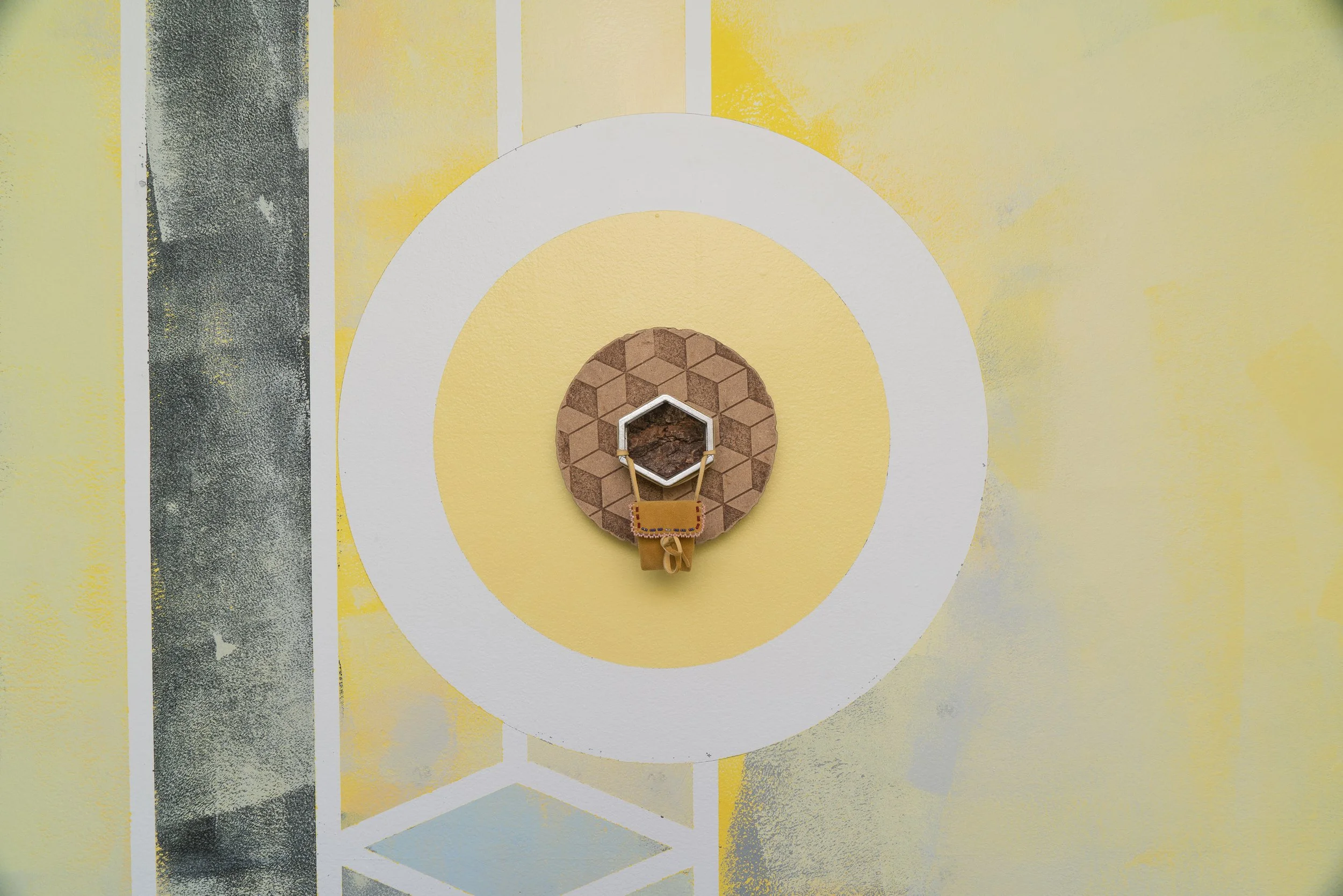
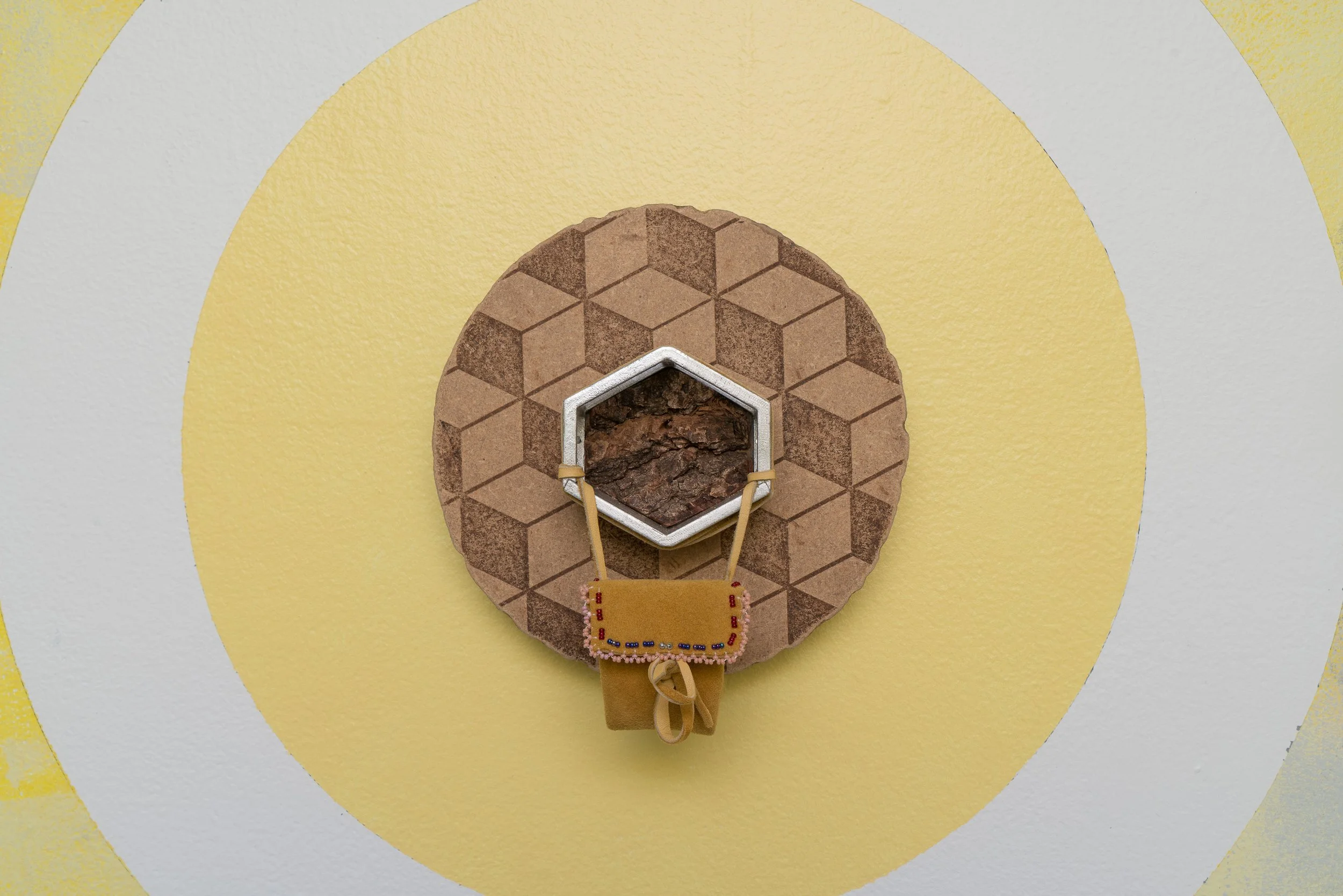

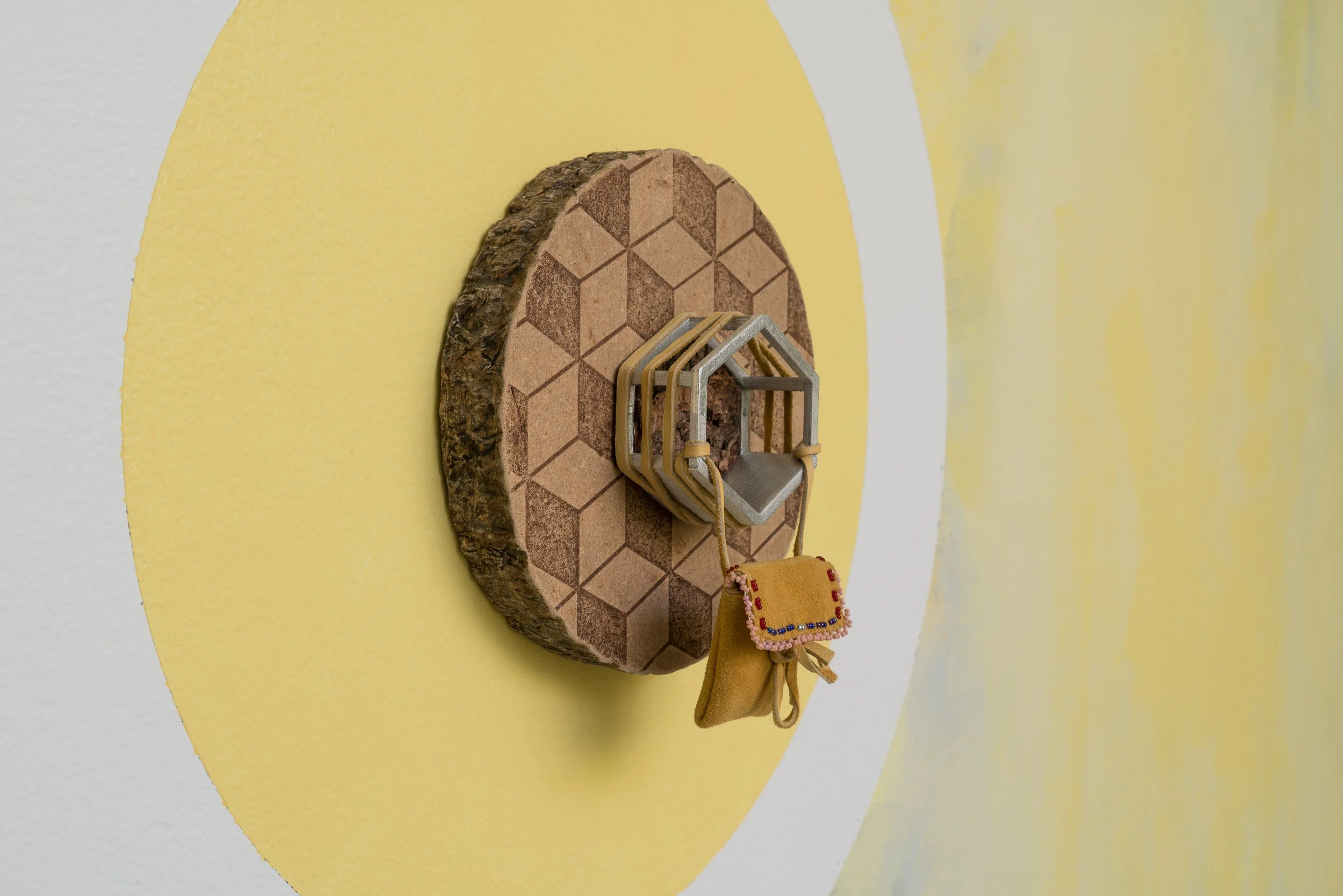



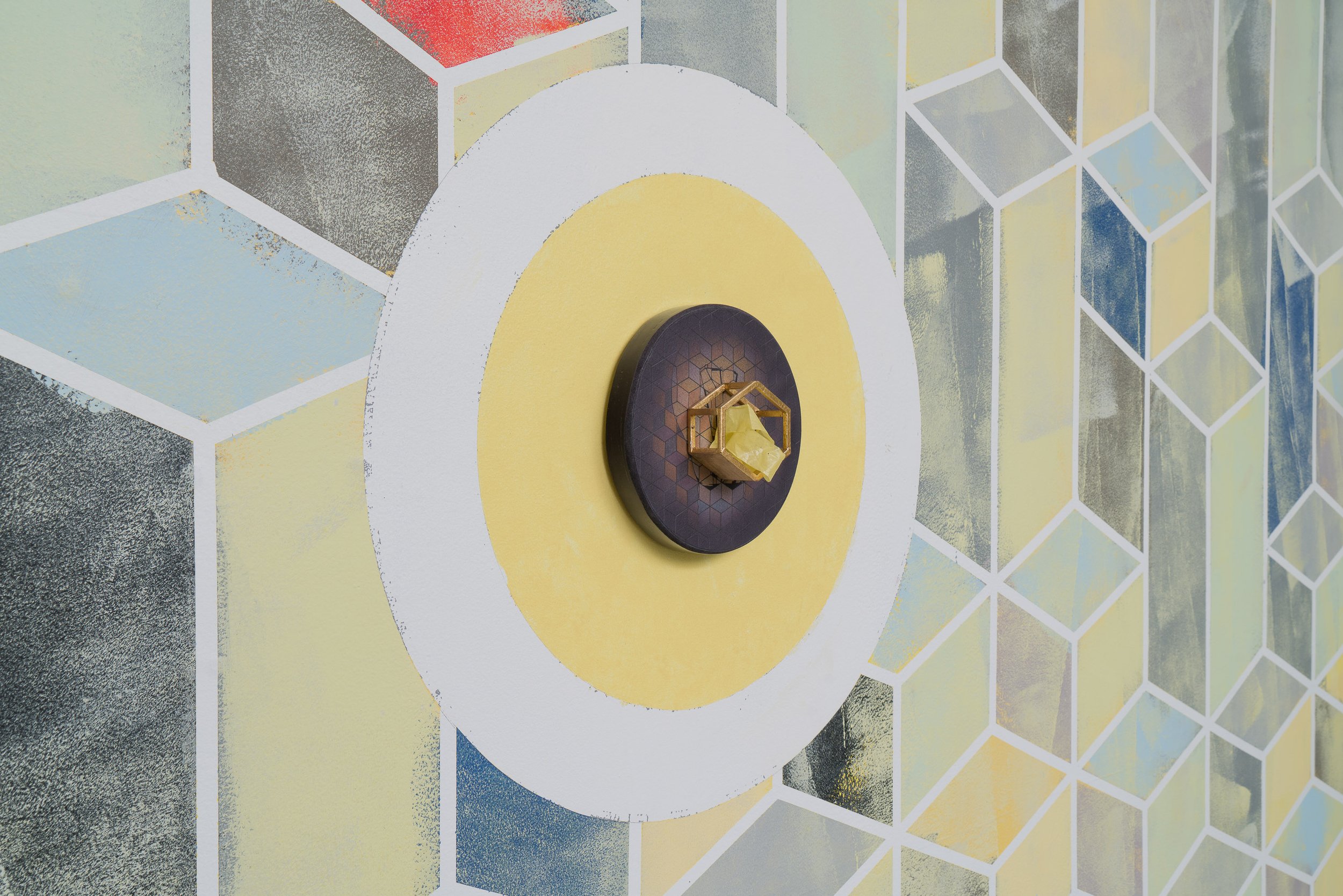






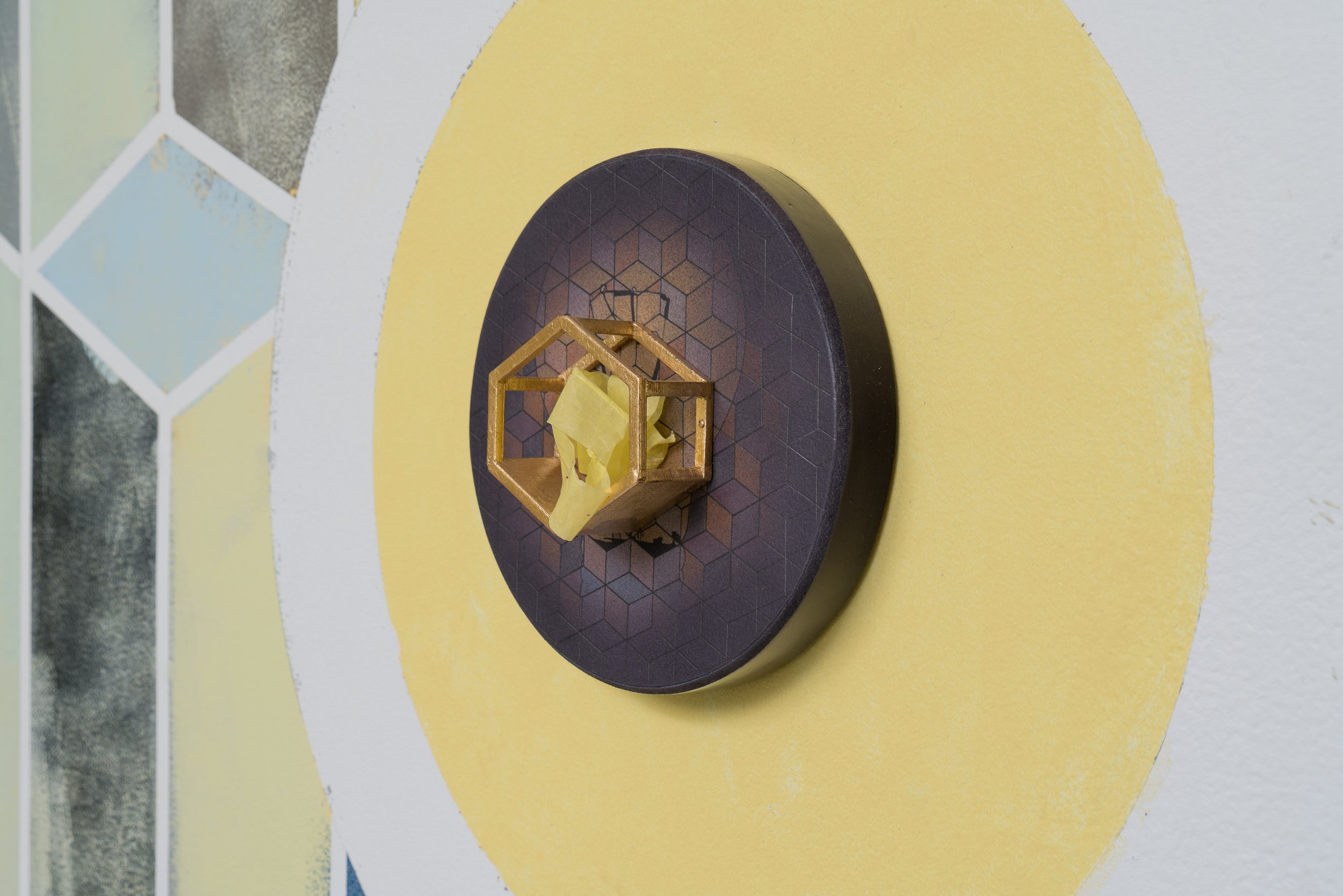
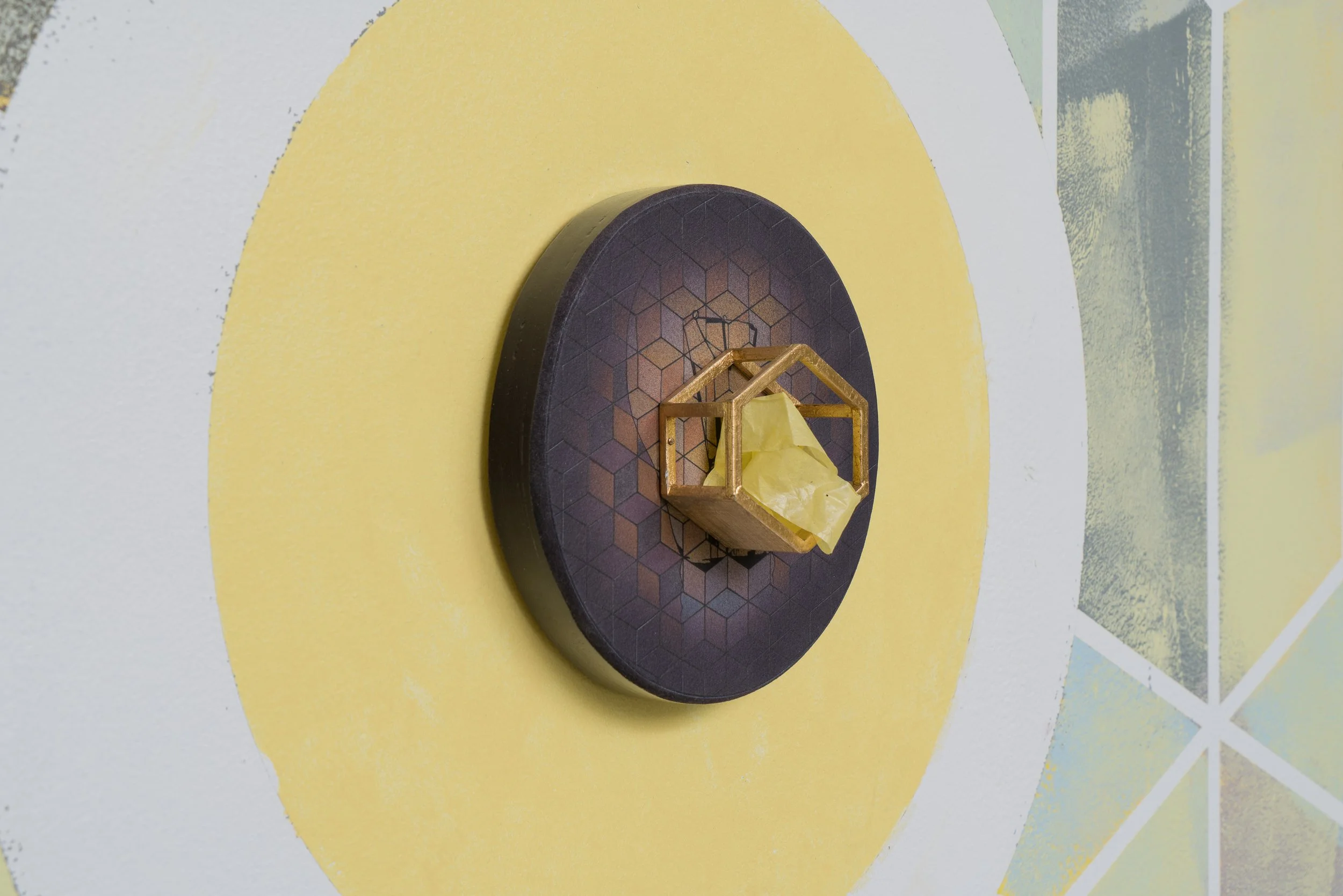



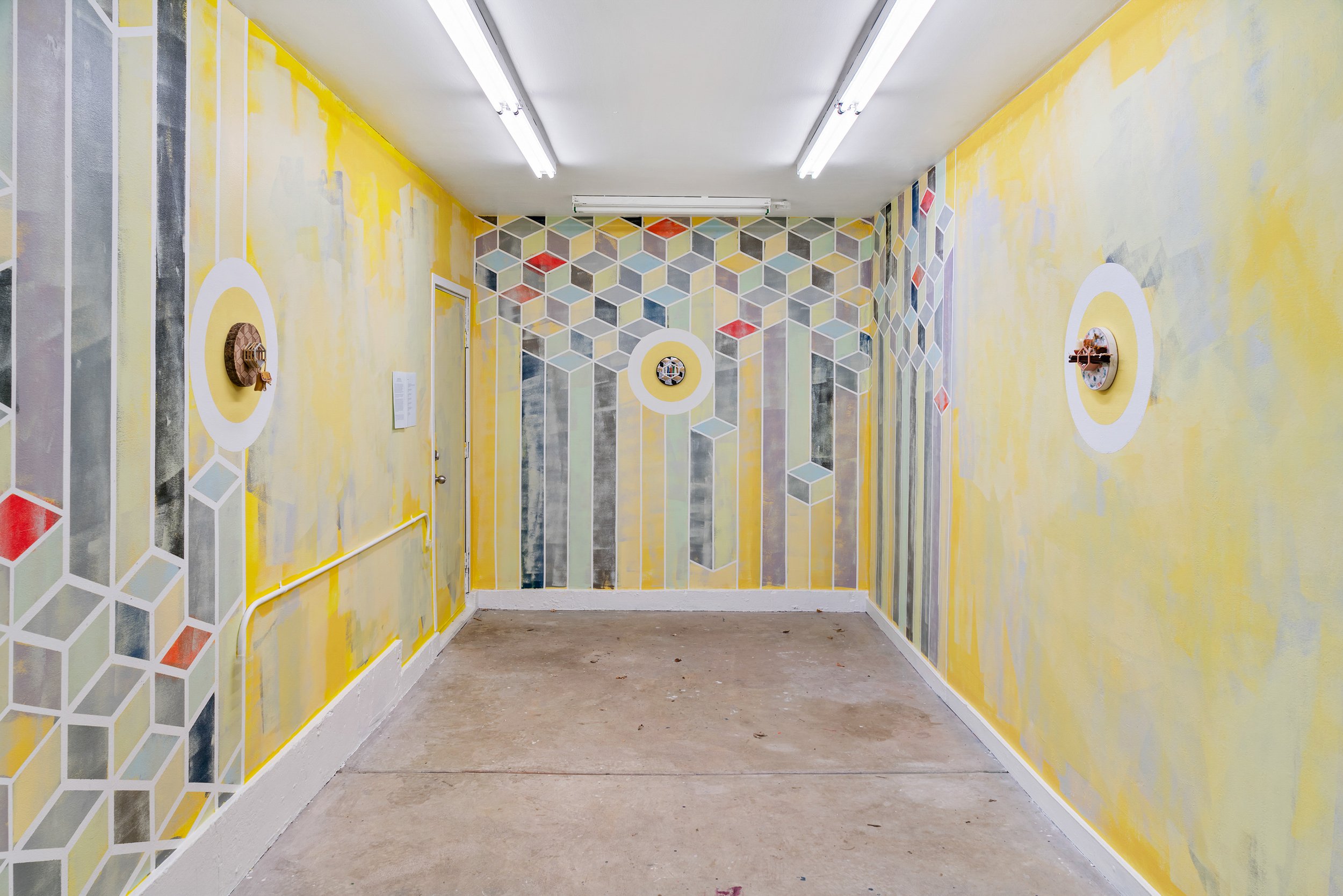

Tesselescence (Compound Yellow)
Latex paint left from previous Compound Yellow exhibitions, Compound Yellow Gallery, waste (empty paint cans, tape, paint roller, and plastic bag)_1057 x 264 x 266cm_2023
“Tesselescence (Compound Yellow)” is the next in a series of installations that reveal the visual history of an artist-run space using leftover paint from their previous exhibitions. Integral to this process is the careful processing of the cumulative resources that these kinds of spaces accrue, such as latex paint ranging from fresh to spoiled, or disorganized inventories. The term “Tesselescence" comes from a larger, ongoing series of work begun in 2014, which encompasses many transformative processes of waste materials. It is a portmanteau combining the concepts of “tessellation” (a two-dimensional pattern with a three-dimensional effect) and “obsolescence,” be it unintentional or planned. The site-specific painting that results from this process serves as a framework for the artworks in the exhibition.
Image Credits: Bob.